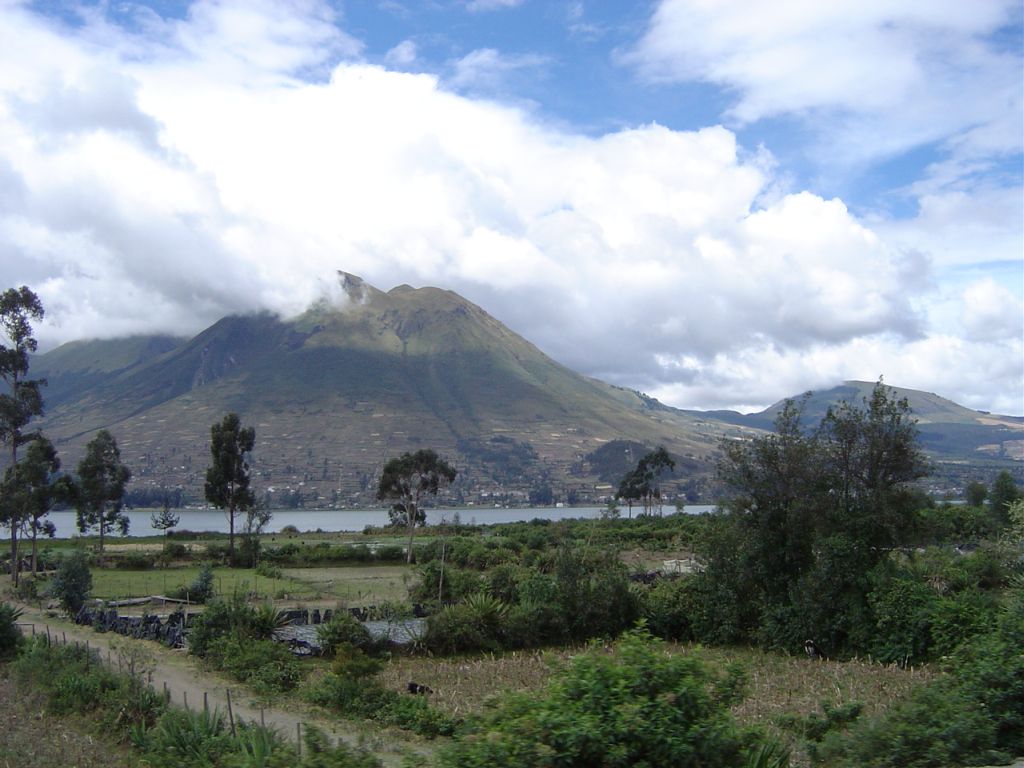Panama and Ecuador
July, 2004
July 19th
Shipping a car out of Panama requires a receipt from the PTJ, or Policia Technica Judicial. They verify the serial number and type it on a form with three sheets of carbon paper. Then they write it by hand in a book with 1000 pages, where it will never be found, no matter how hard you search. Then you take one of the pages down the hall to another office and start all over again. If you are lucky, your paperwork will be finished before the phone rings and the secretary looses track of everything. We weren't that lucky. Our form got stapled into a pile belonging to another guy. He almost got away, but a diving catch in the end zone saved the day.
July 20th
Off to the shipping company to count out $820 in twenty-dollar bills. Cash makes no enemies. Correctly typing the 17 digit VIN number on the Bill of Lading was too much to expect, an error I didn't notice until it was pointed out the next day at the Colon Container terminal...
July 21st
After a monumental paperwork shuffle to correct the VIN number, providing a missing Zarpe (shipping form) was a piece of cake. The car was inspected in minute detail and the smallest scratch was documented. Customs took their turn poking through the luggage before they brought in a dog to sniff for drugs. He was bored to tears. The folks at the port were ready for us. It takes nine people to open the container door, place little ramps to drive the car in, nail wood blocks to lock the tires in place, tie ropes to prevent sideways motion, and photograph the sealing of the doors. As the doors closed and the latches dropped in place, we felt truly homeless. Our Jeep was on it's way to Ecuador.
We took a taxi back to the Colon bus terminal to return to Panama City about noon. The area around the terminal was so rough looking, we decided to have lunch at the Panama Canal Yacht Club, a few blocks away, first. As luck would have it, I was offered a line-handler's position the next day on a boat going south through the canal. Elsa wouldn't hear of postponing our flight, which was just as well; a transit on a boat that can't make eight knots is now done in two parts. One day takes you into Gatun Lake for an over-night stay and the pilot comes back aboard the next day to finish the trip. Two more days in Panama were not what the doctor ordered.
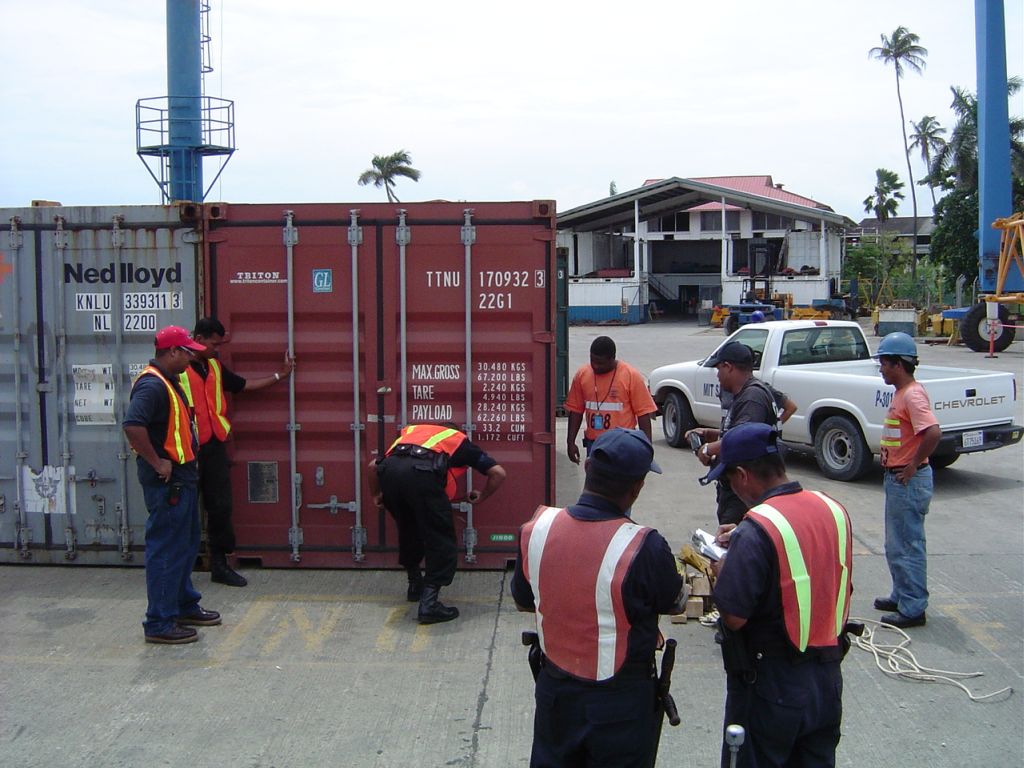
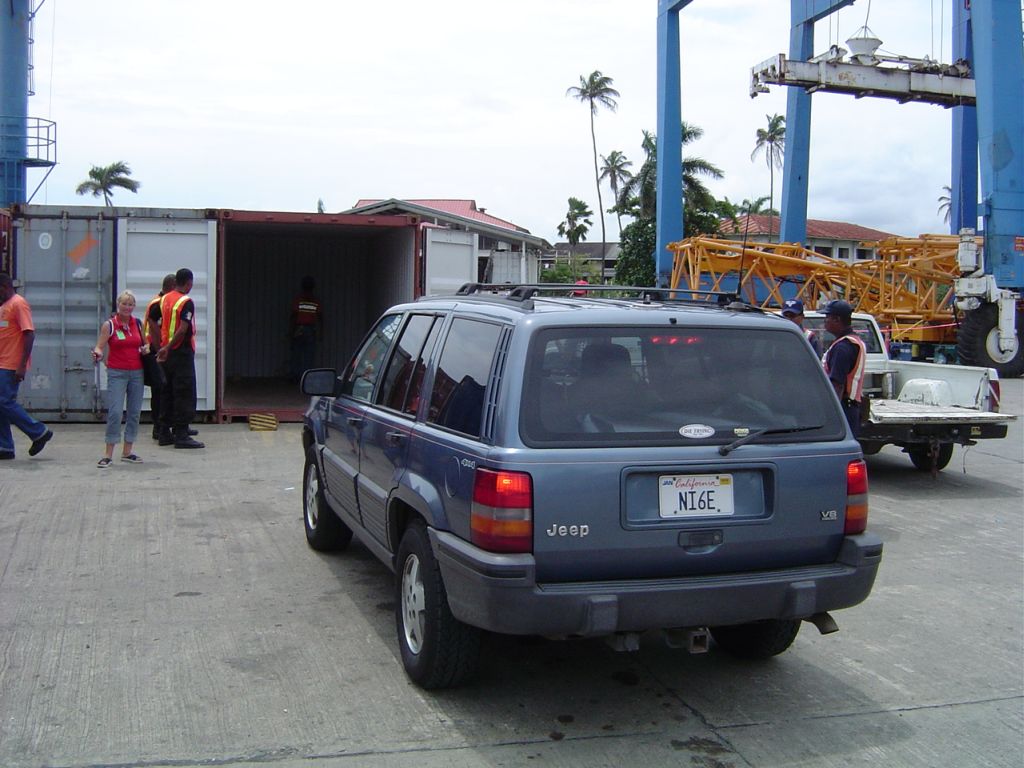
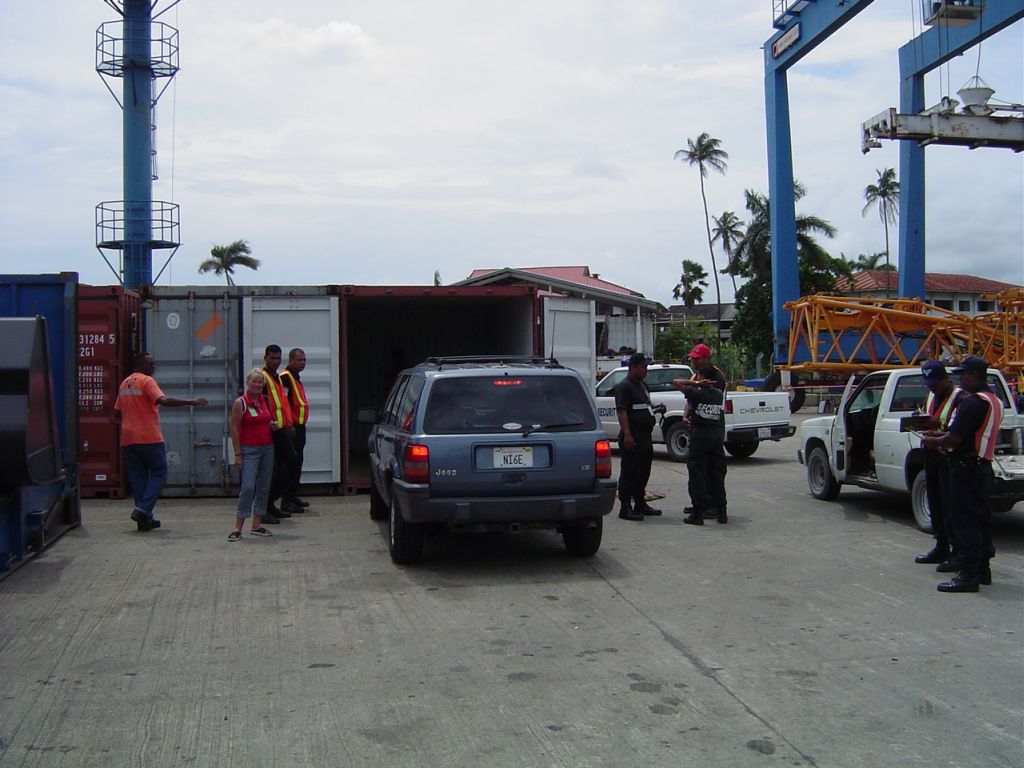
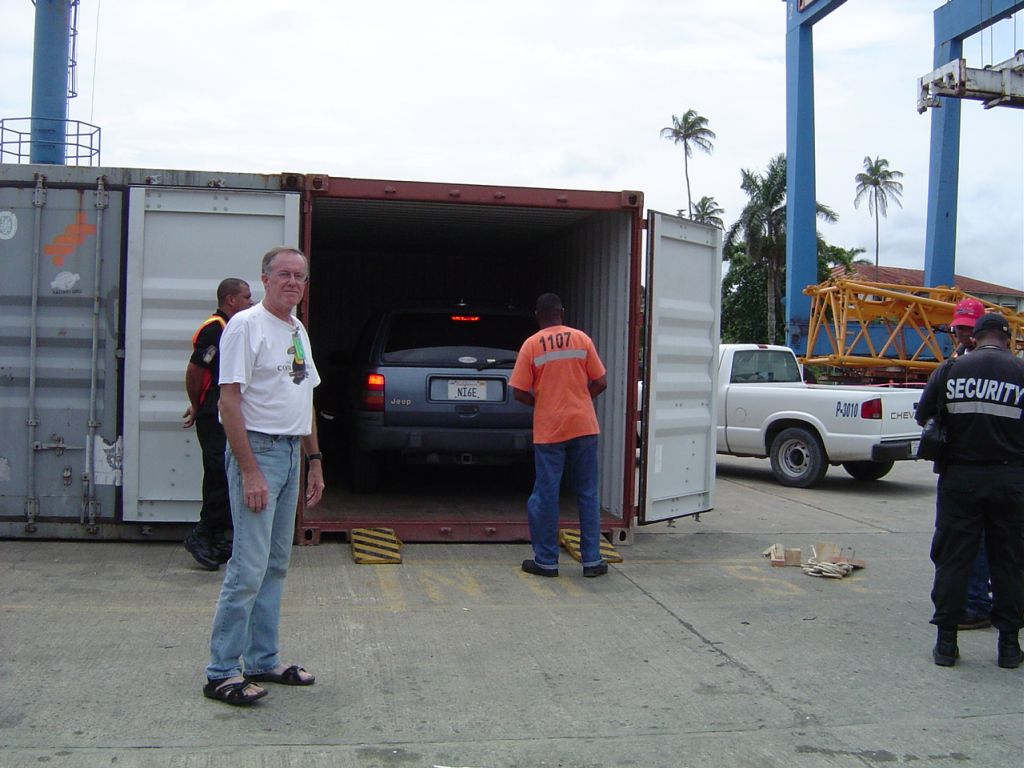
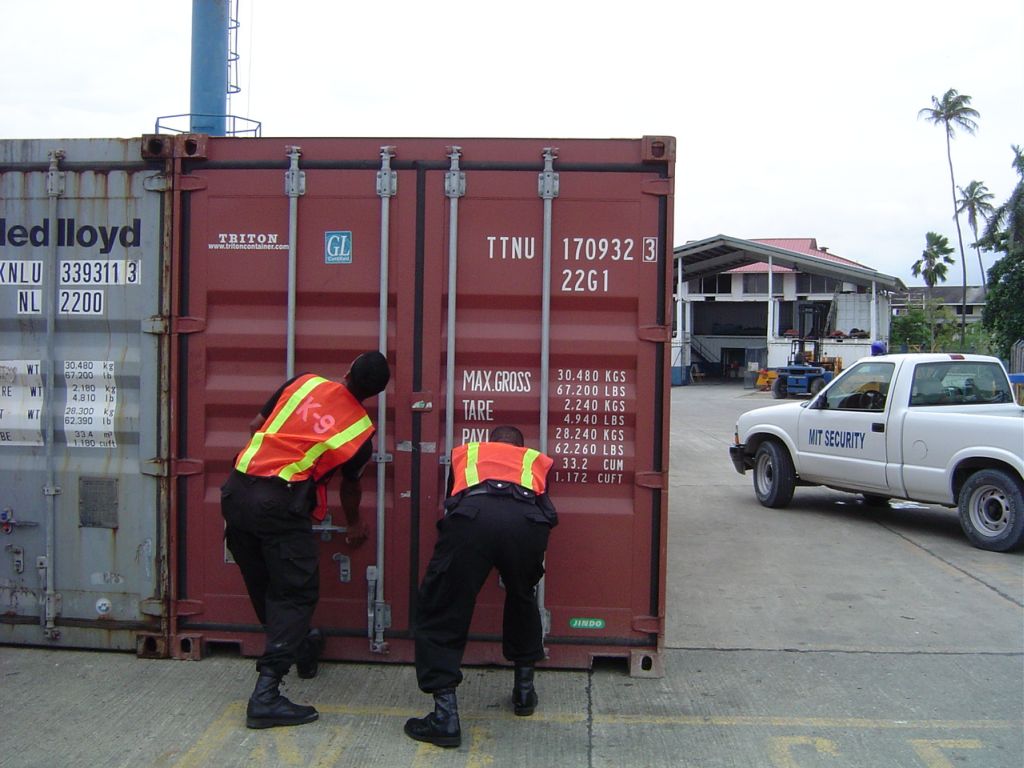
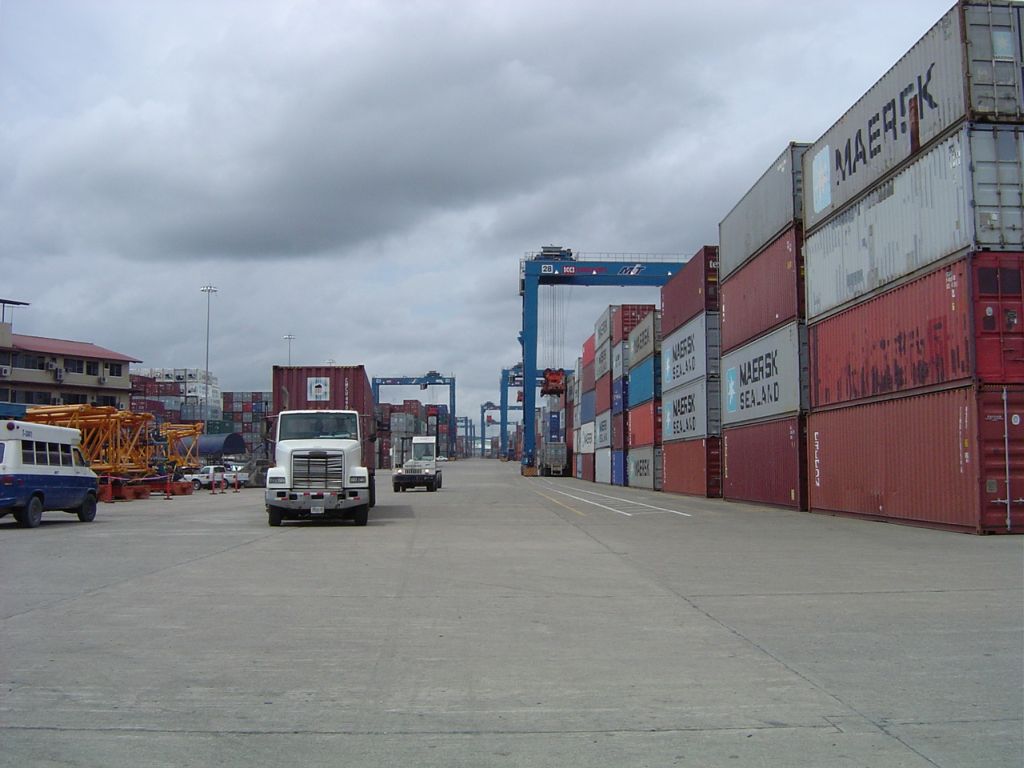
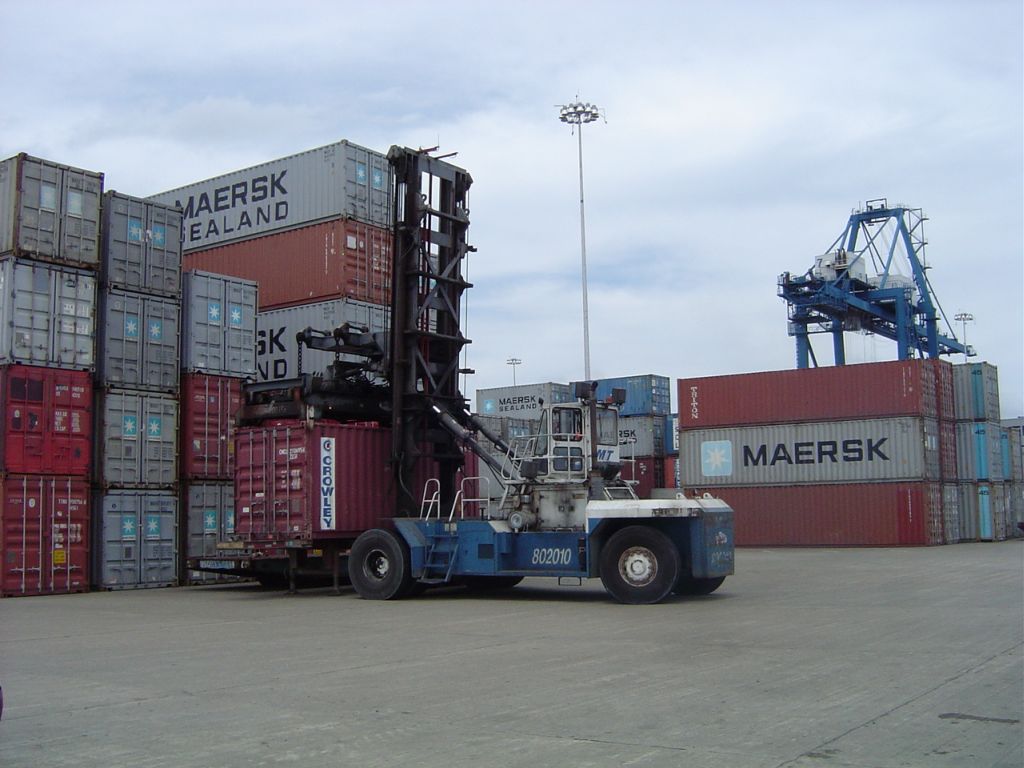
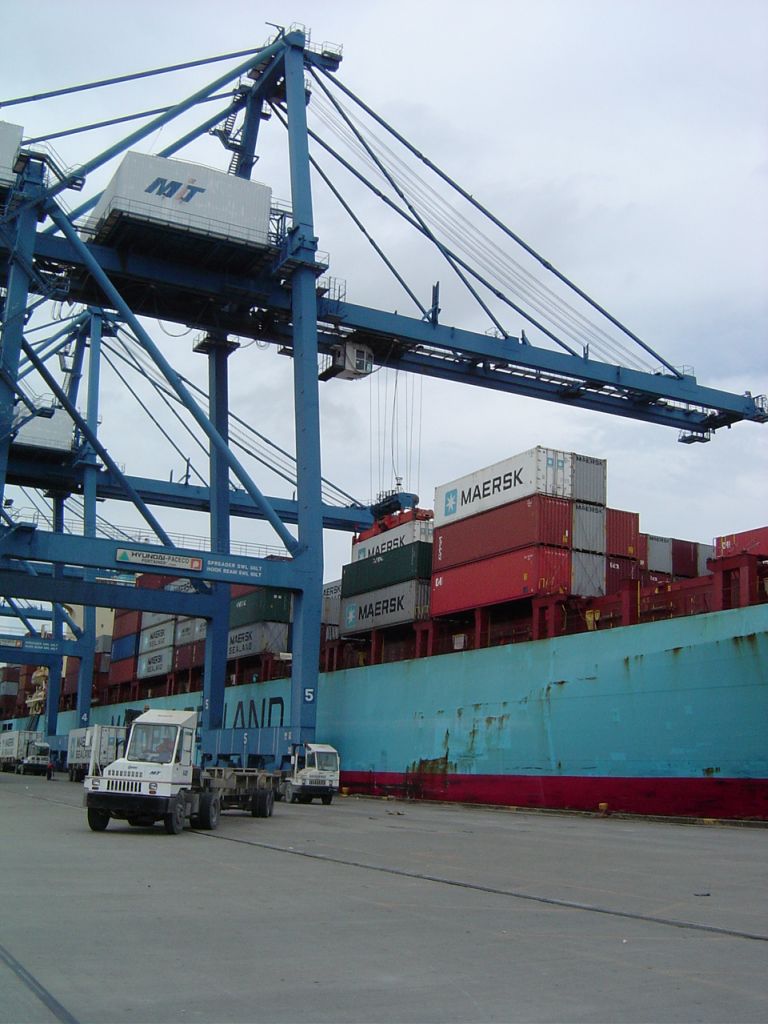
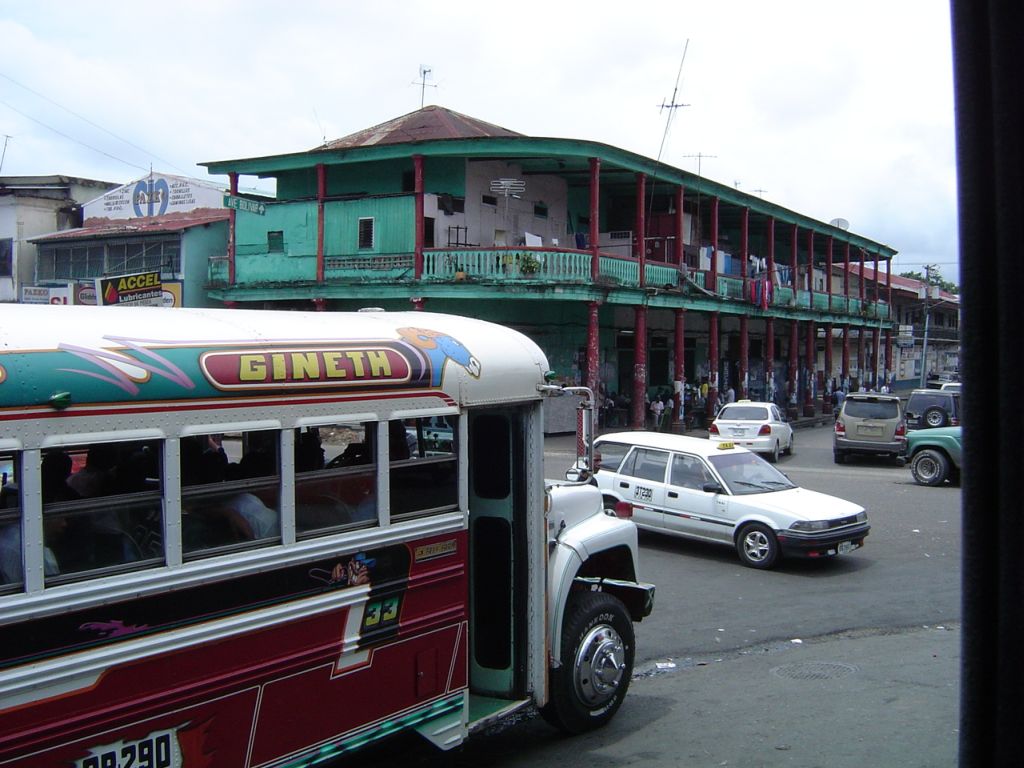
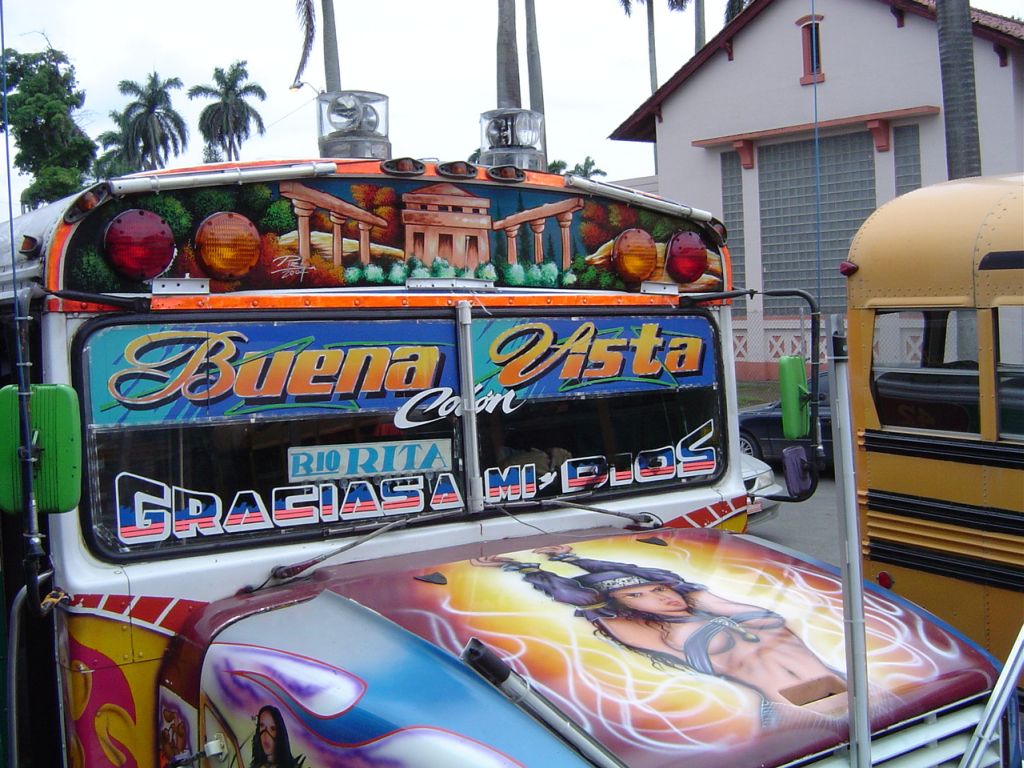
Wandering in Colon, Panama, after lunch
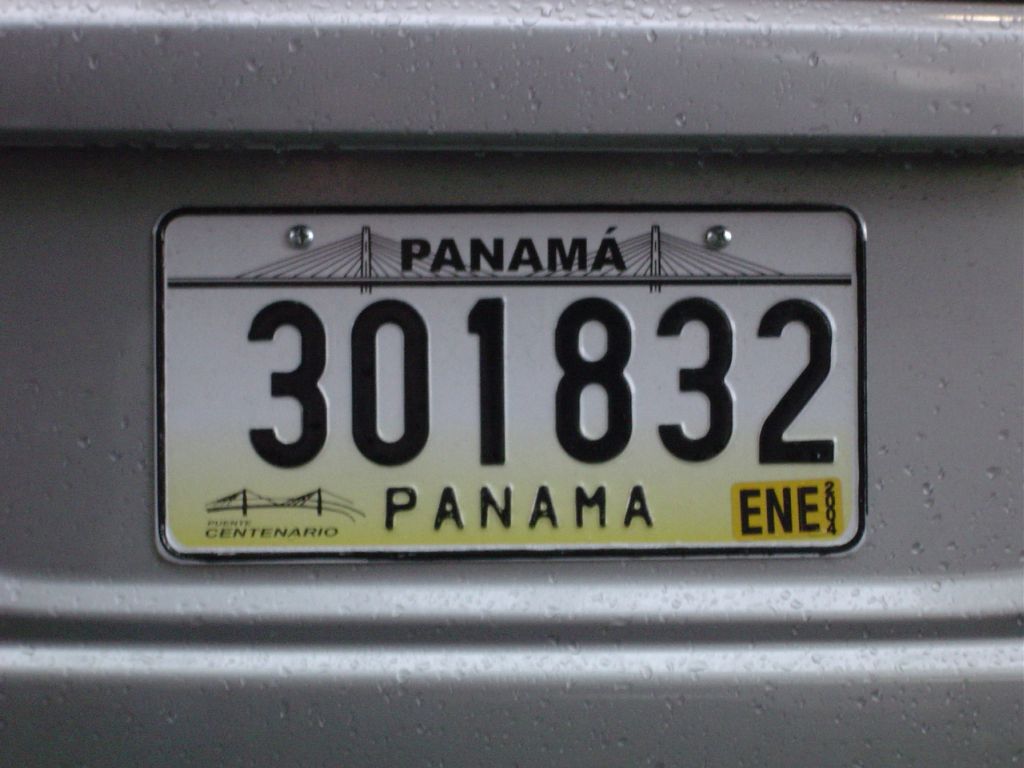
July 22nd
New Country, New Continent, New Hemisphere
Waiting for the flight to Quito took three hours. The flight to Quito took two hours. We could have driven there in less time than it took to fly, if there had been a road. A special Kamakaze rating is given to the pilots who fly into Quito, allowing them zoom low over the city while circling during the final approach. The thin air at the field elevation of 9300 feet results in a faster approach; the runway disappears behind you pretty quickly.
The first thing you notice entering the Quito terminal, other than the fact that you can't breathe, is the bowls of hundreds of roses, red, pink, white and yellow, all fresh and perky. After oil, roses rank high in Ecuador's list of exports.
The center-piece in the lobby of Hotel Quito is a huge bowl of red roses. High on a ridge on the approach to the airport, every incoming flight offers guests a red-hot buzz job. The dining room on the 7th floor has a 360 degree view, including the airport runway, 6 km away. Our room has a terrific view of Volcano Cayumbe.
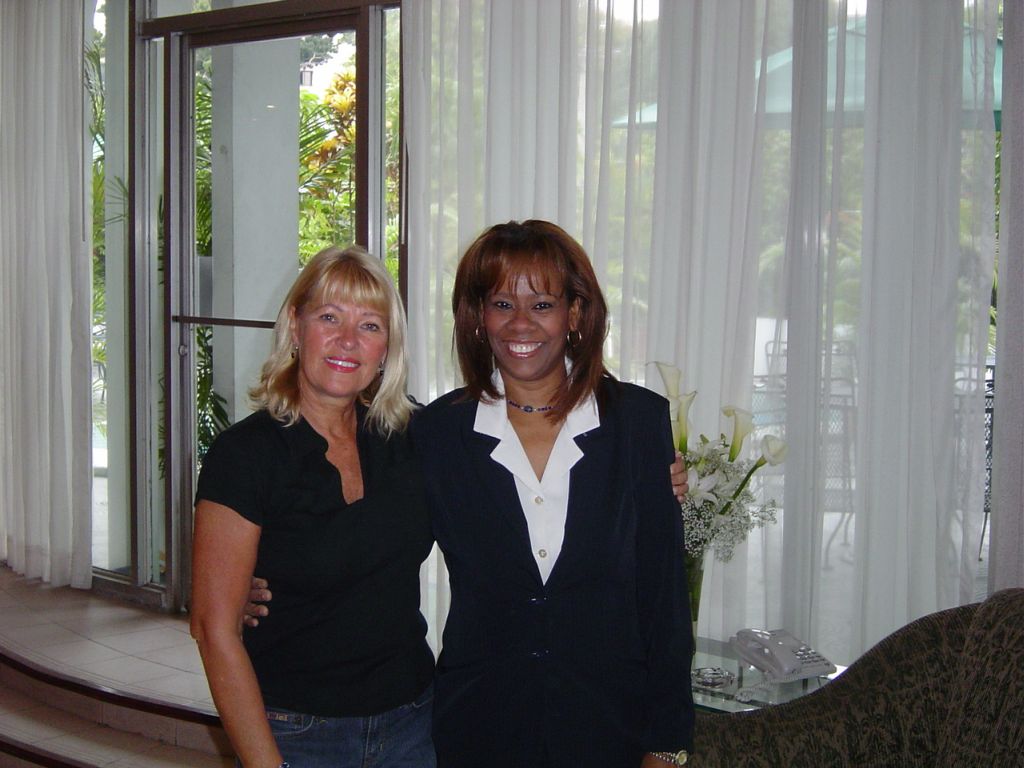
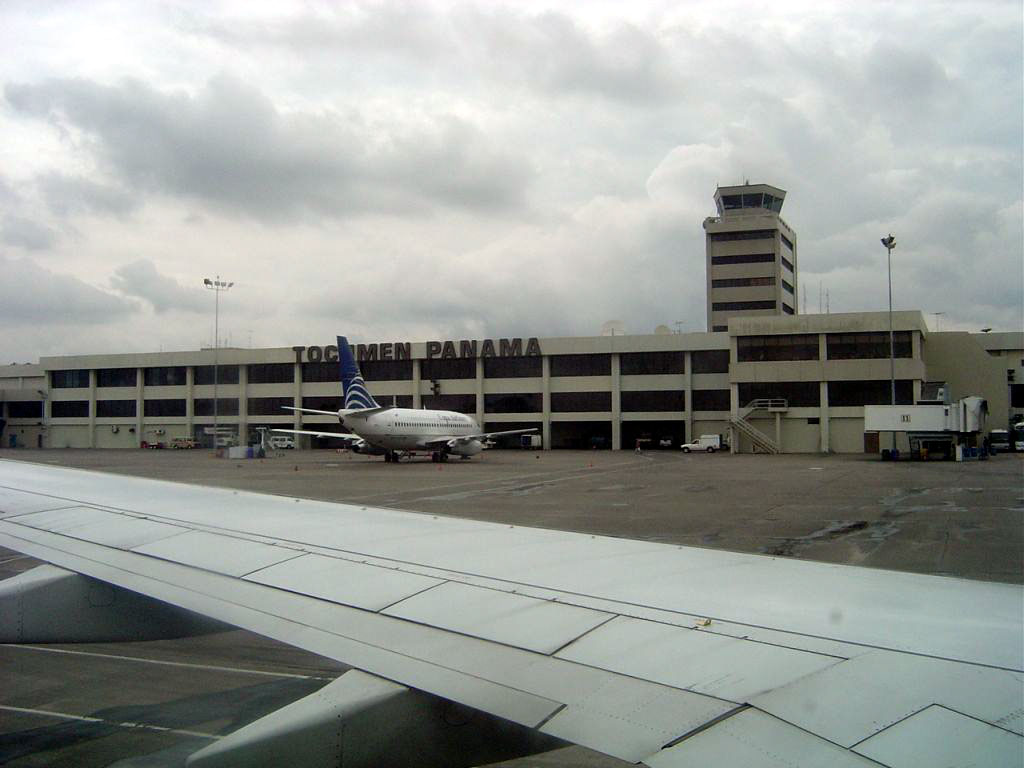
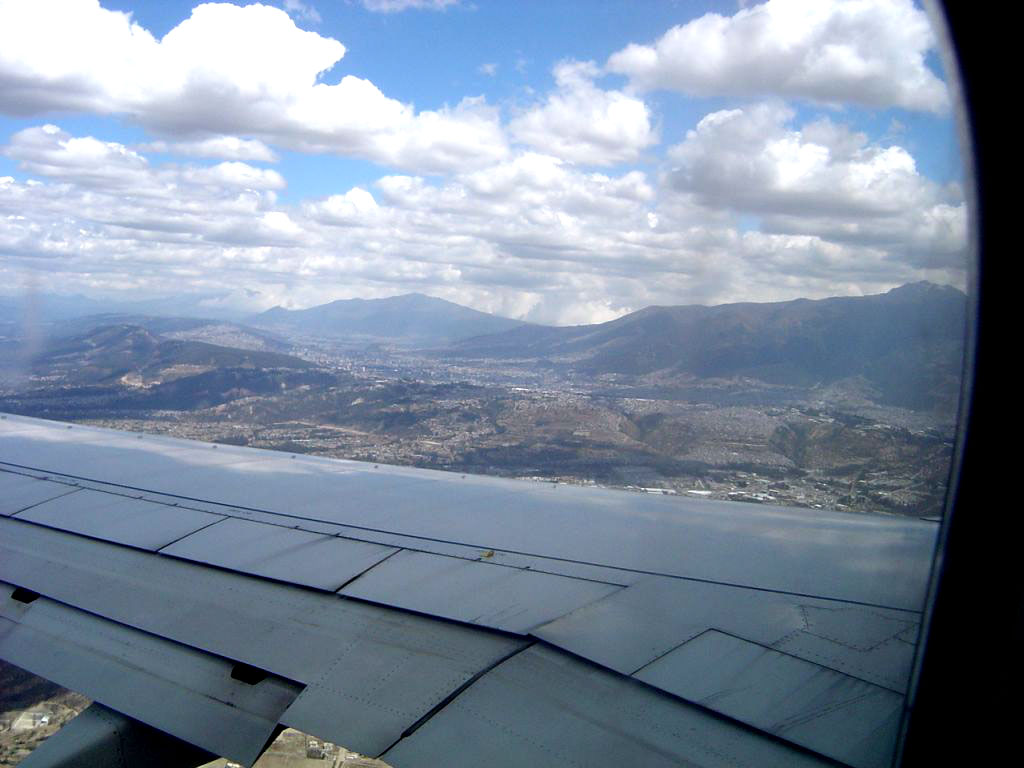
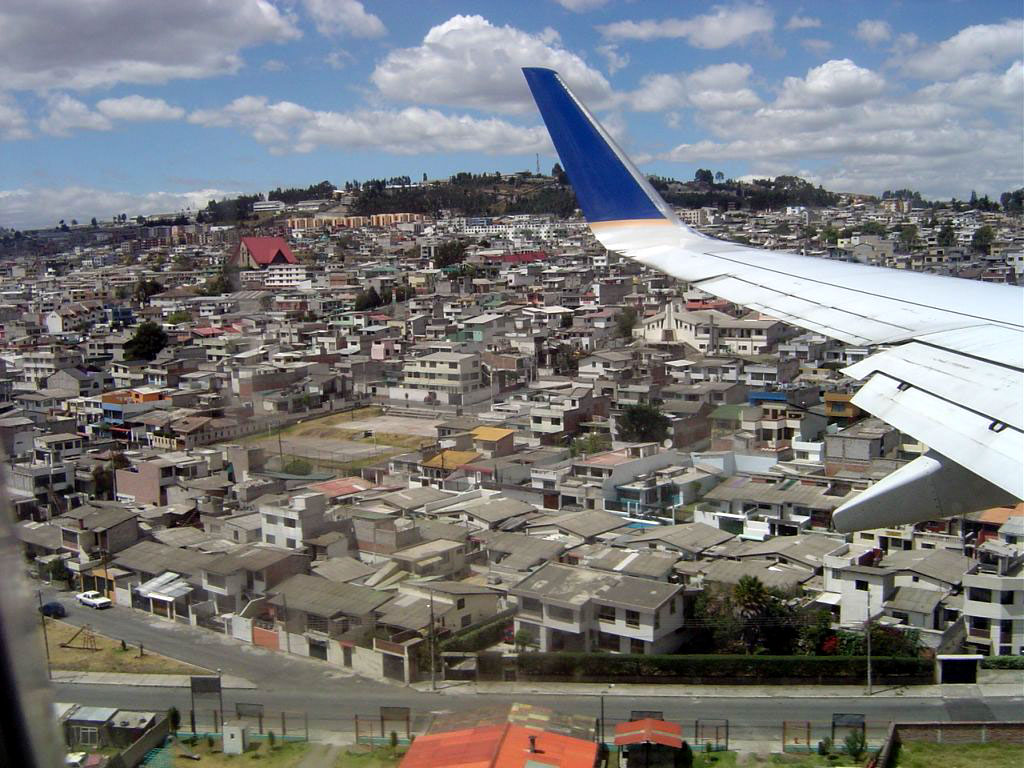
July 23rd
Off by taxi to the downtown studios of HCJB, short-wave radio Voice of the Andes, to find that the transmitter site is 10 miles out in the country, not really a surprise. The studio tour guide, a young lady, here 7 years from Iowa, gave us directions and called the chief engineer to let him know we were interested in visiting at a later date. She walked us to the bus-stop and put us on the proper bus for Mitad del Mundo, the Center of the World, at least from an Ecuadorian perspective. You can straddle the line marking the division between the Northern/Winter hemisphere and the Southern/Summer hemisphere. The gigantic monument they constructed missed the Equator by 150 feet, according to my GPS.
Don't take the city tour unless you like churches. We took a three-hour tour, two of which were on foot, and saw 6 of the city's 86 churches. The population is 85% Catholic. The Libertad Plaza has the Presidential Palace on one side where Luis Guiterrez actually lives on the second floor. A demonstration against the low social security payment of $40.00 per month was going on in front. The Central Bank is now closed; the country converted to the US dollar at the end of 1999.
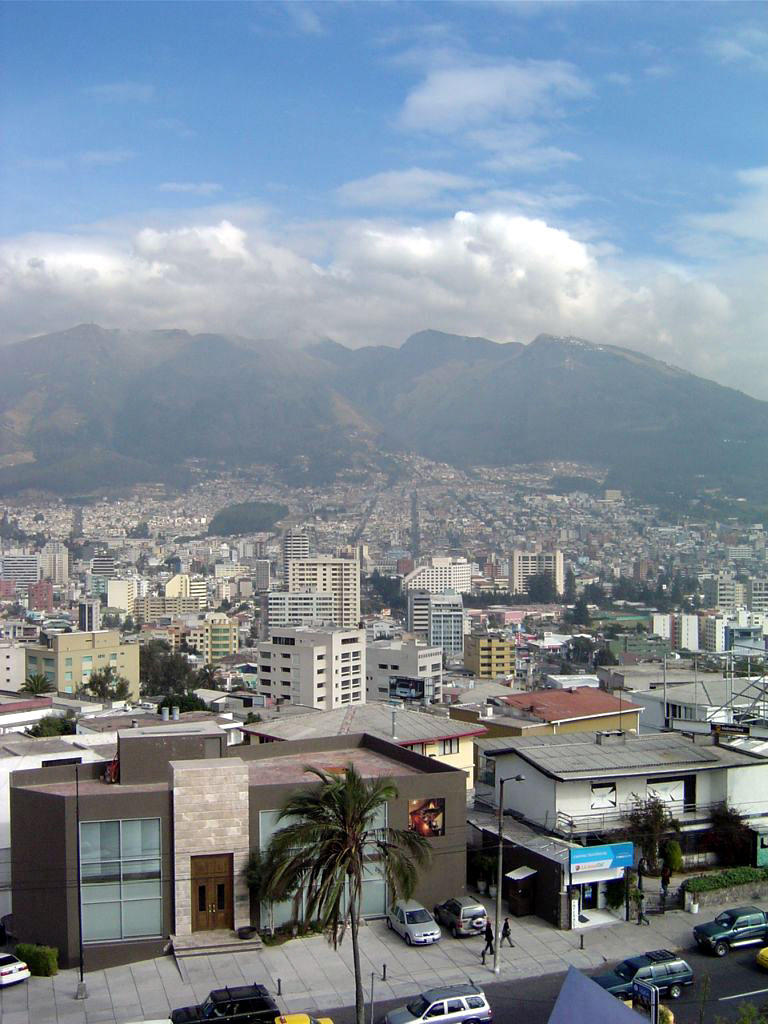
Welcome to Quito, Ecuador
where the airport is almost downtown
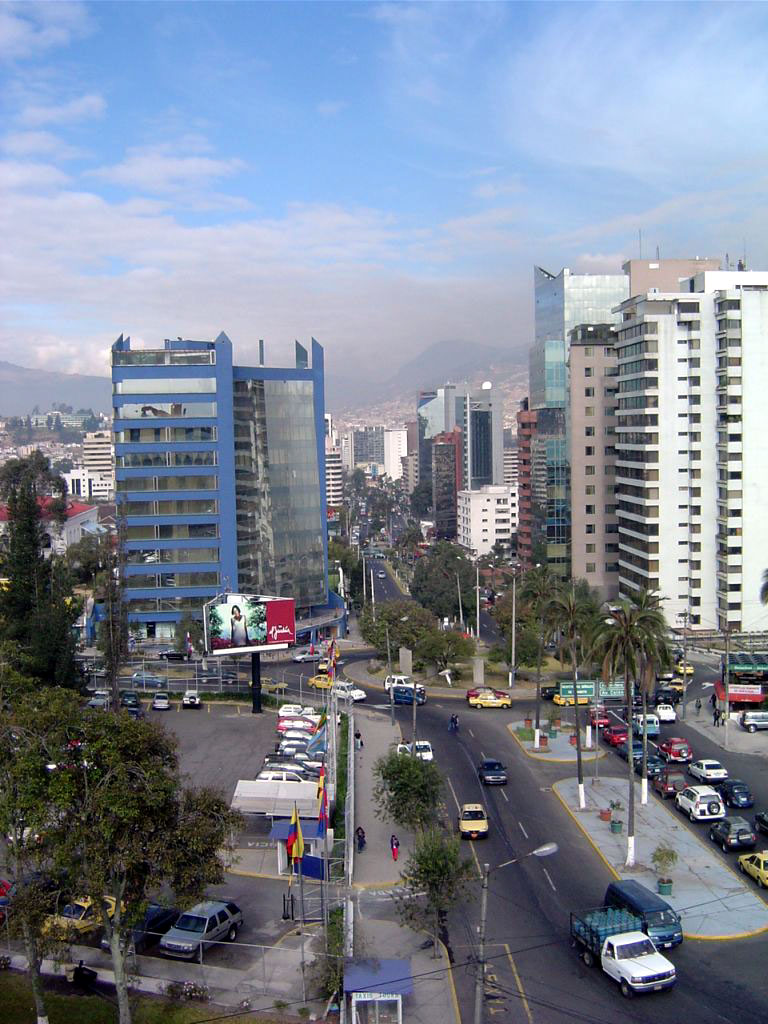
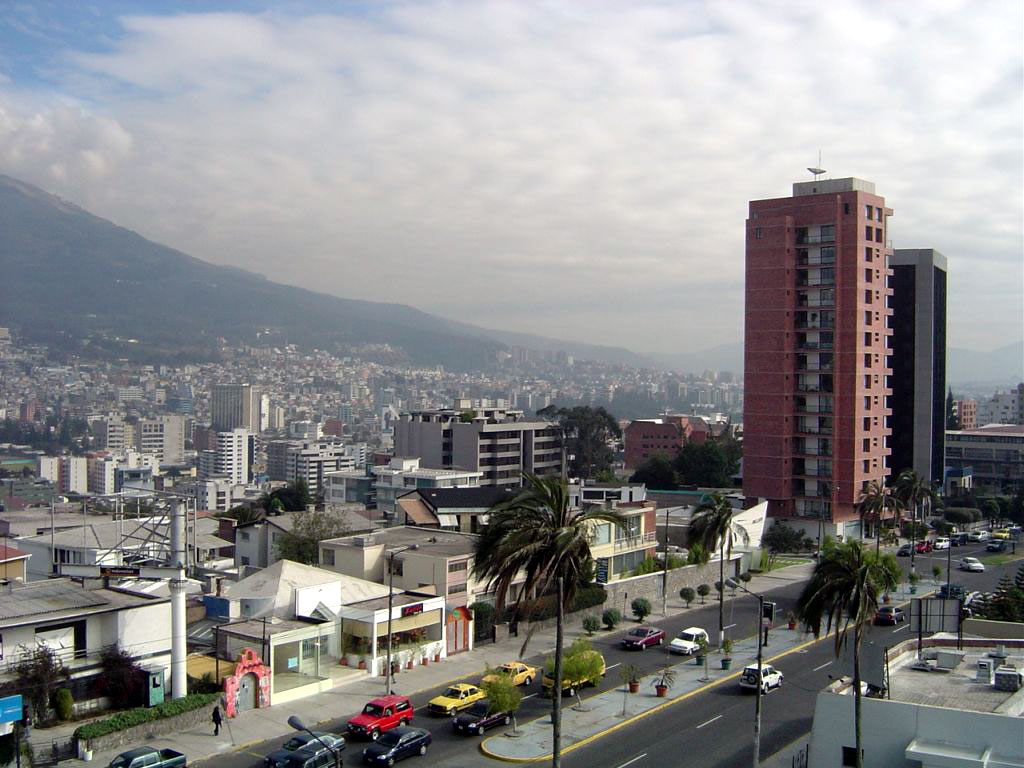
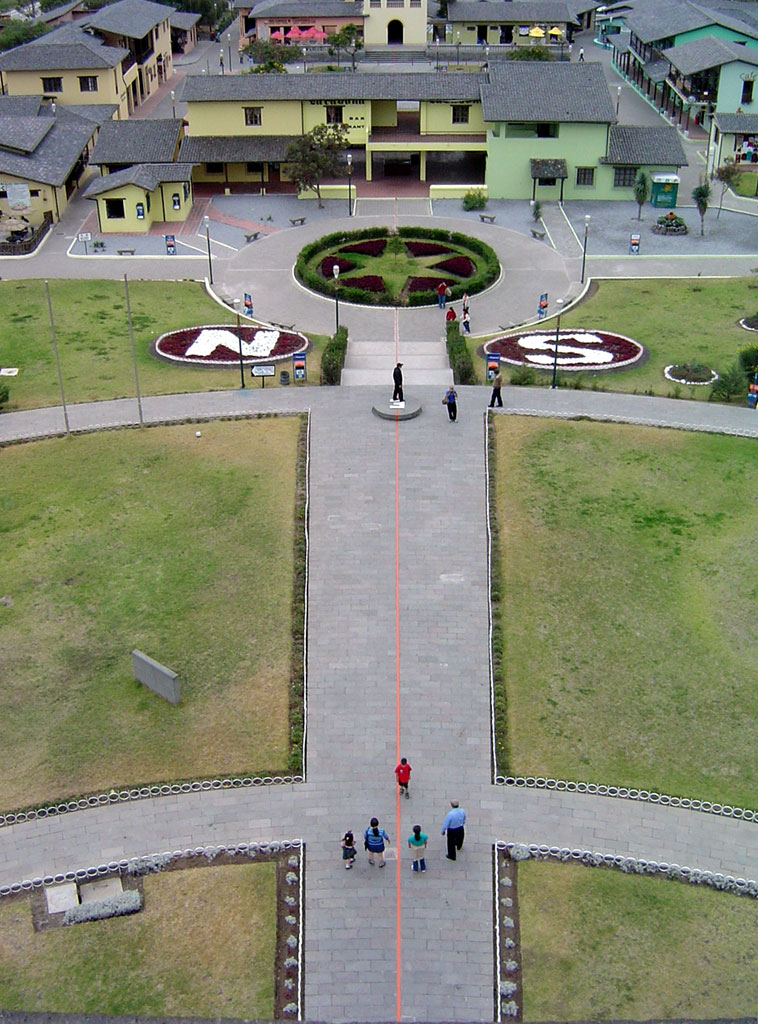
Mitad del Mundo - the Middle of the Earth
Looking East along the Equator (red line)
The N is in the Northern Hemisphere, the S in the Southern
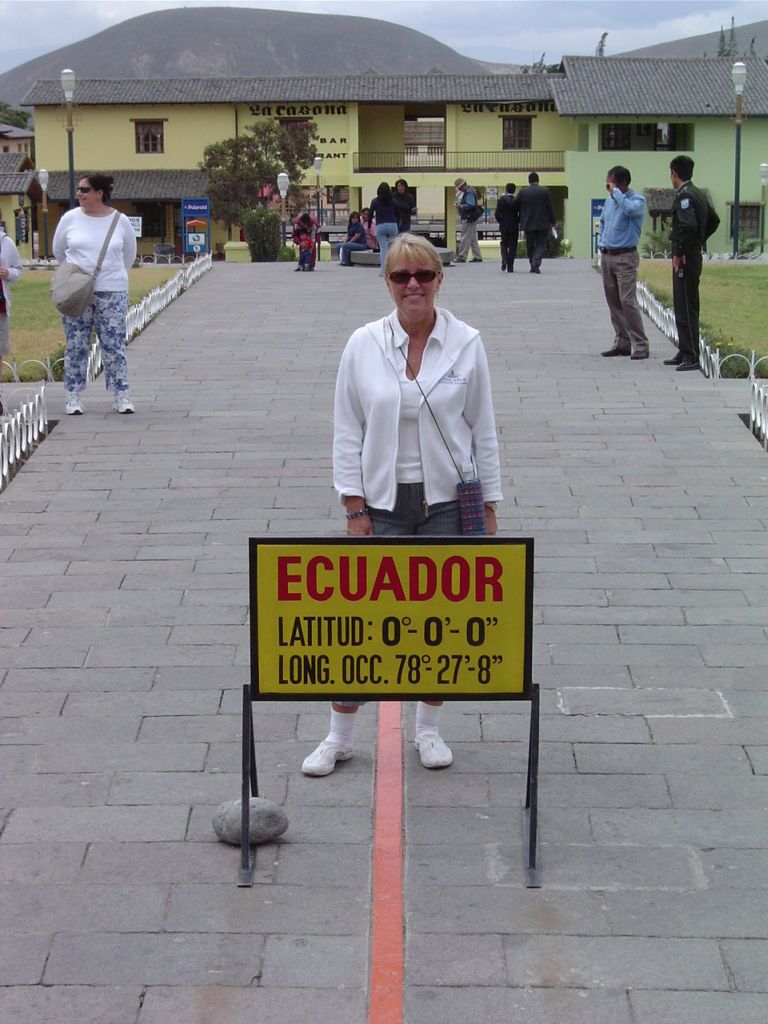
Right foot in the Northern Hemisphere, left foot in the Southern Hemisphere
This is how one develops a split personality
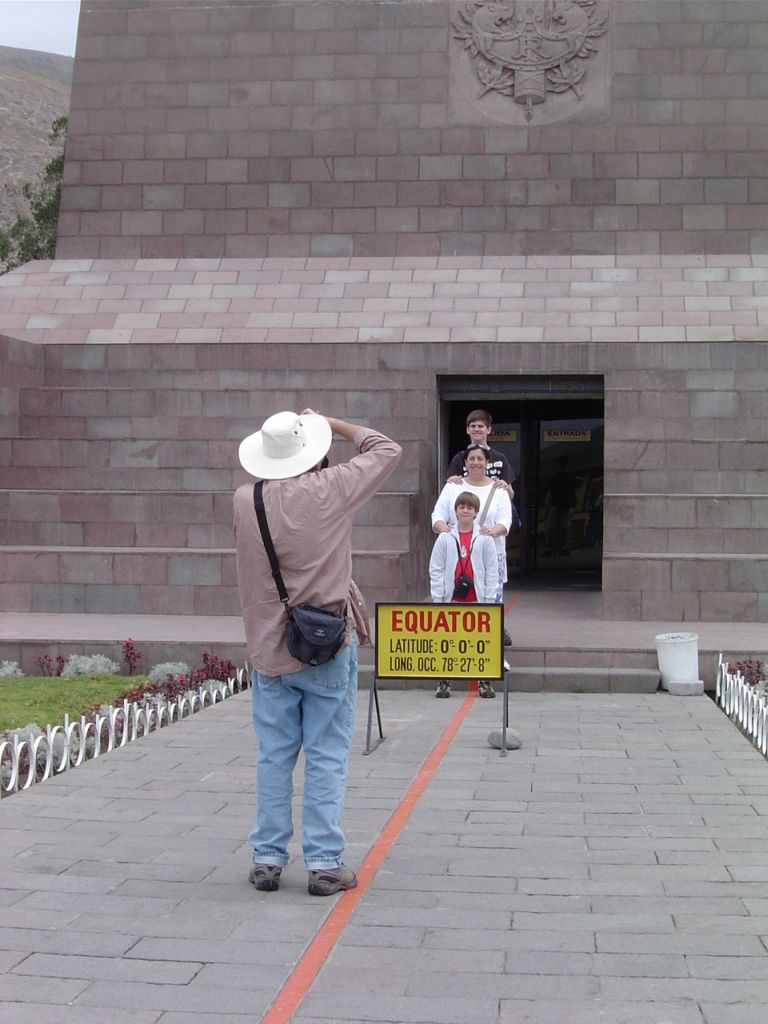
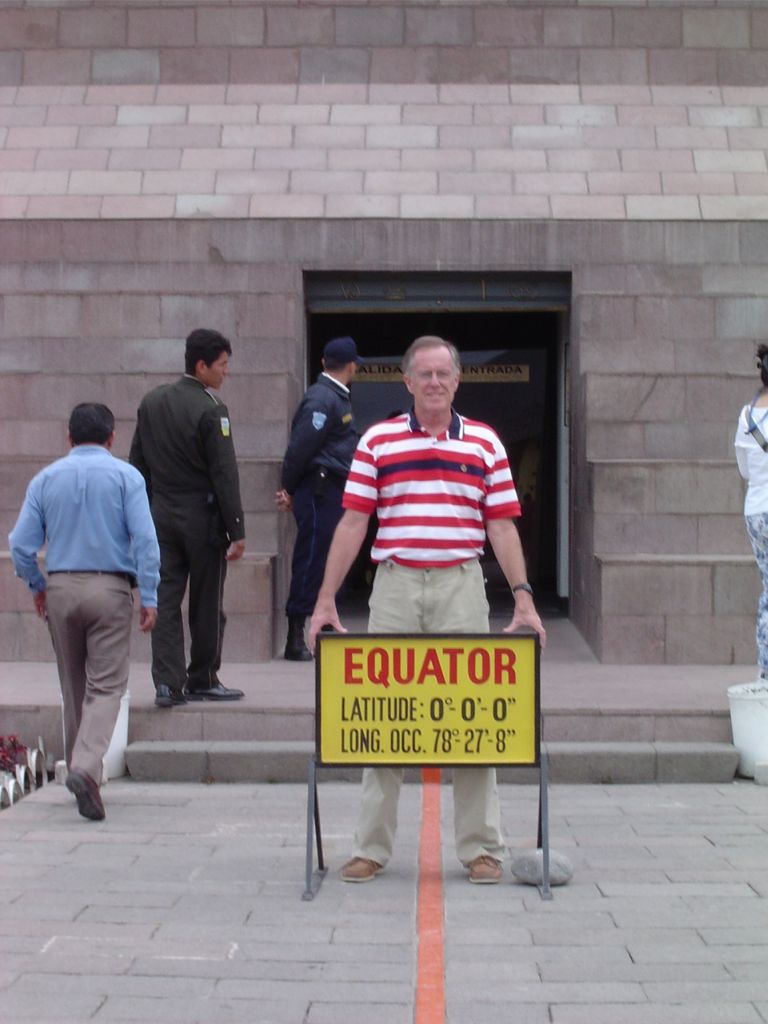
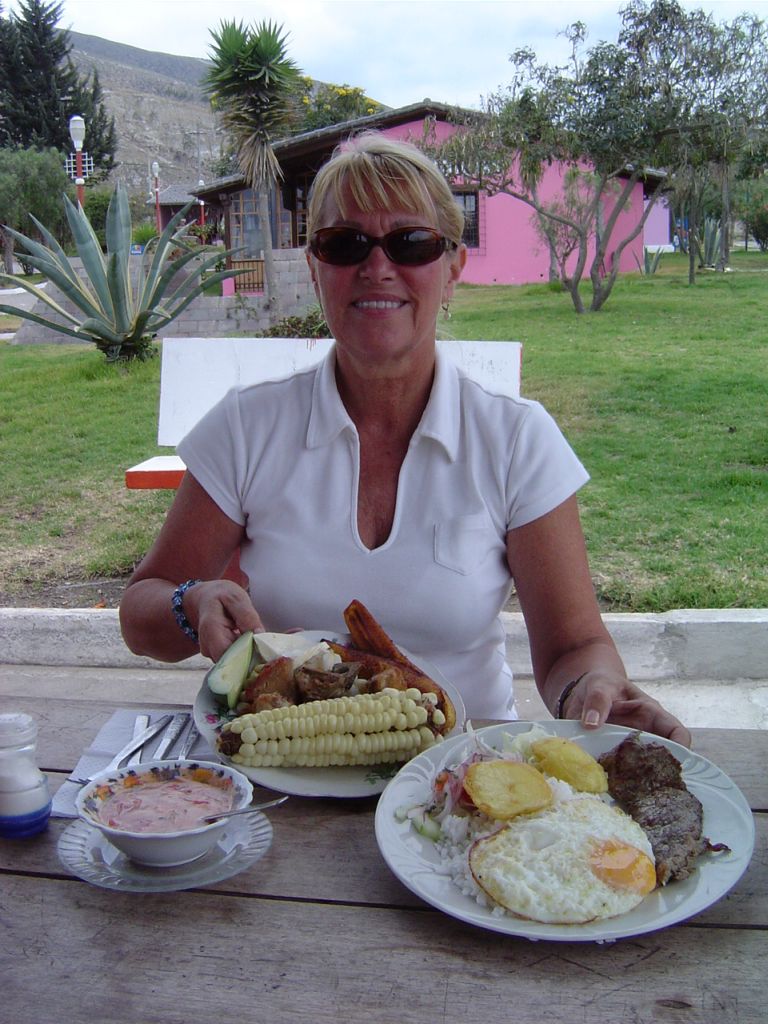
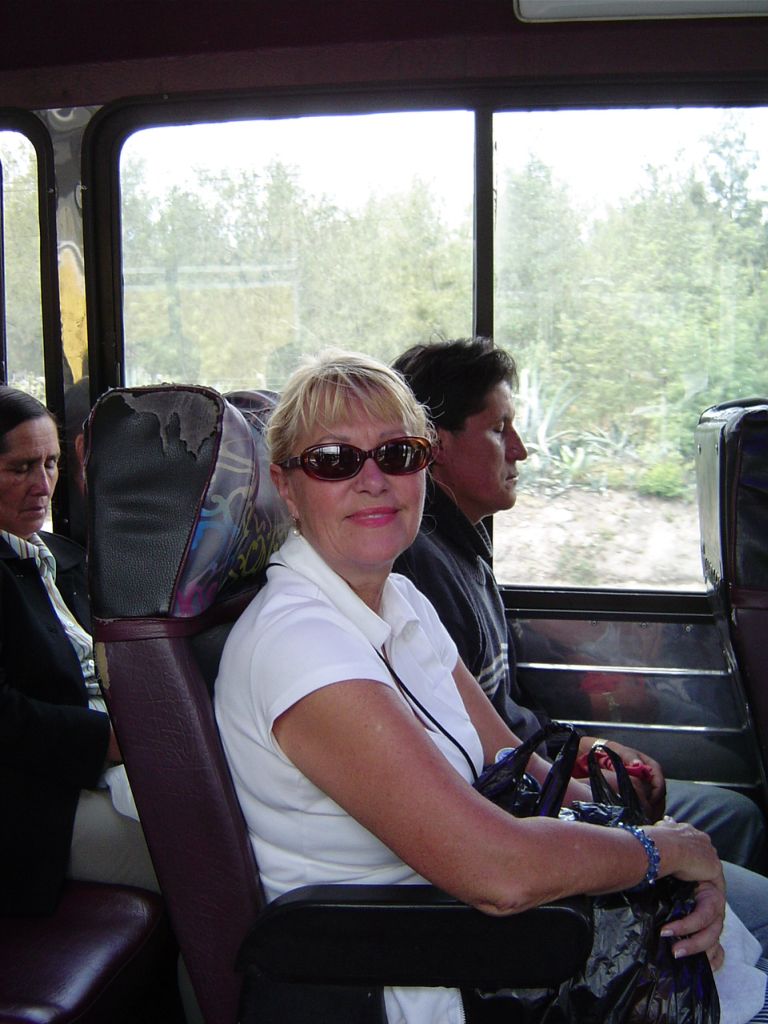
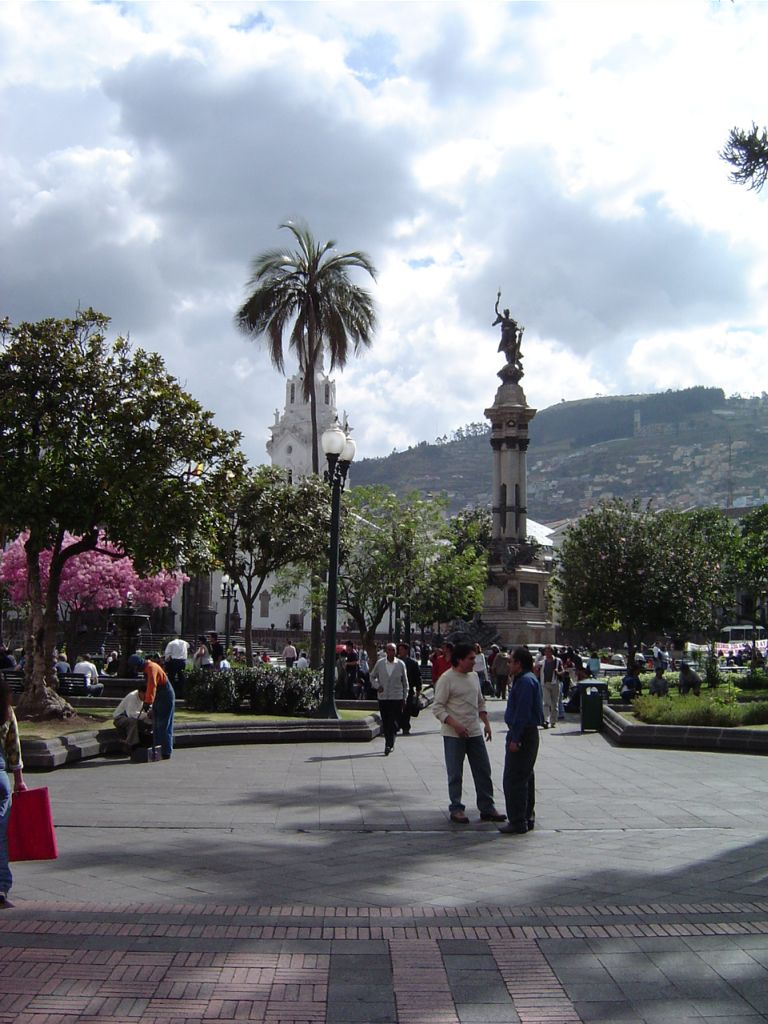
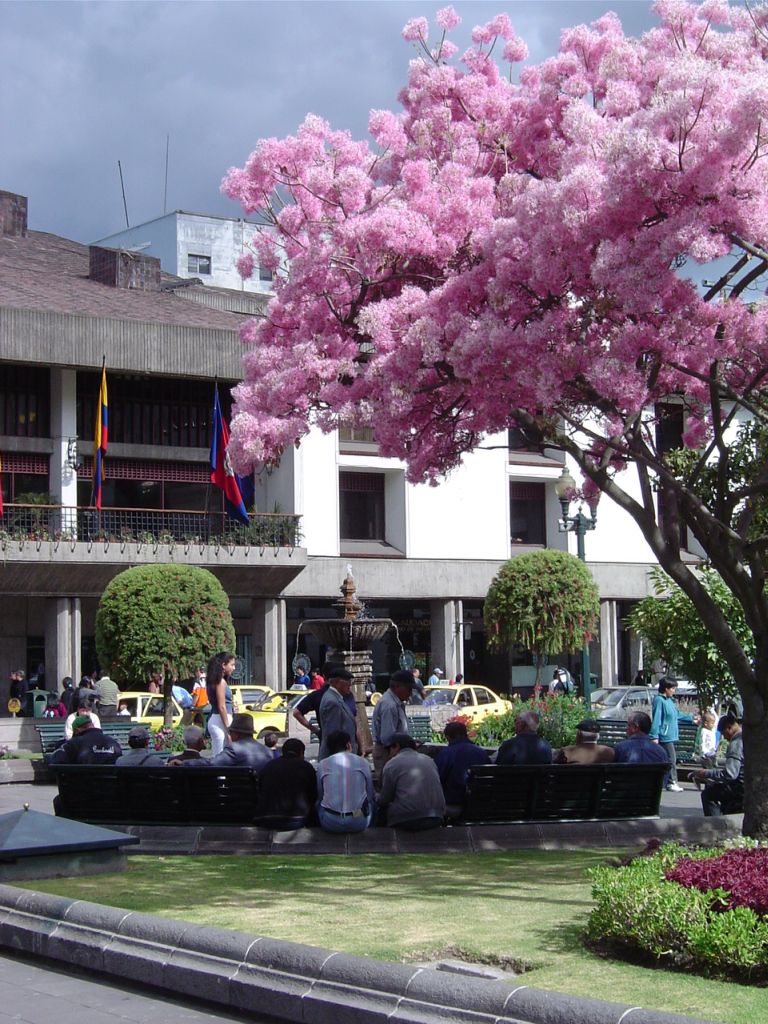
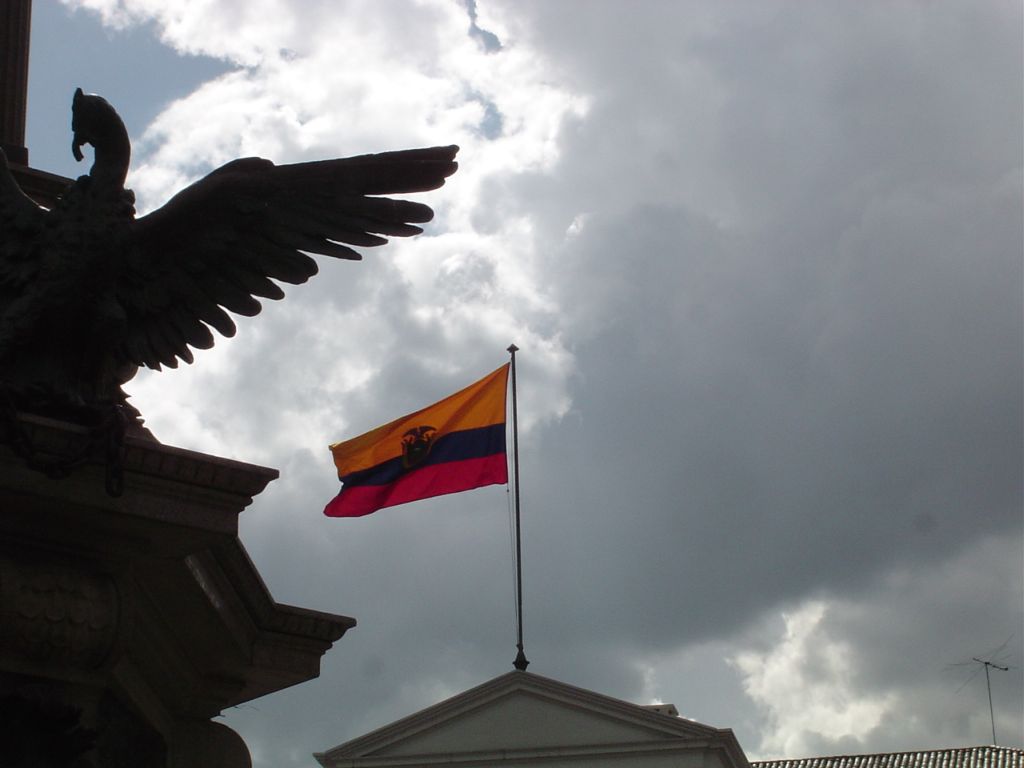
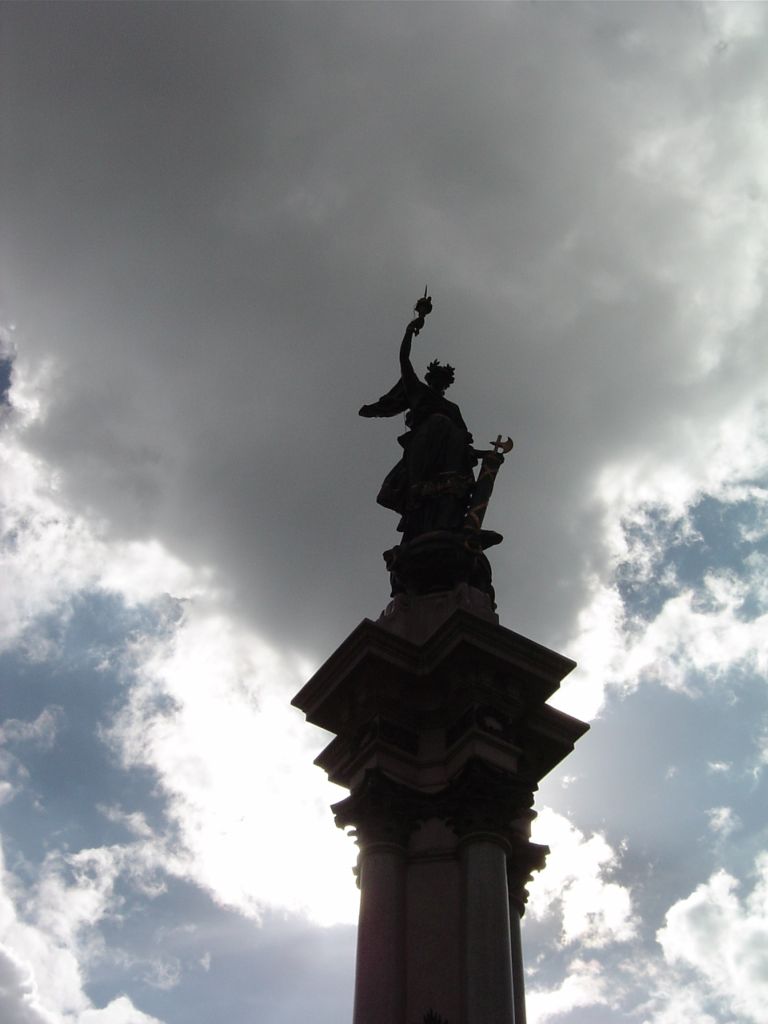
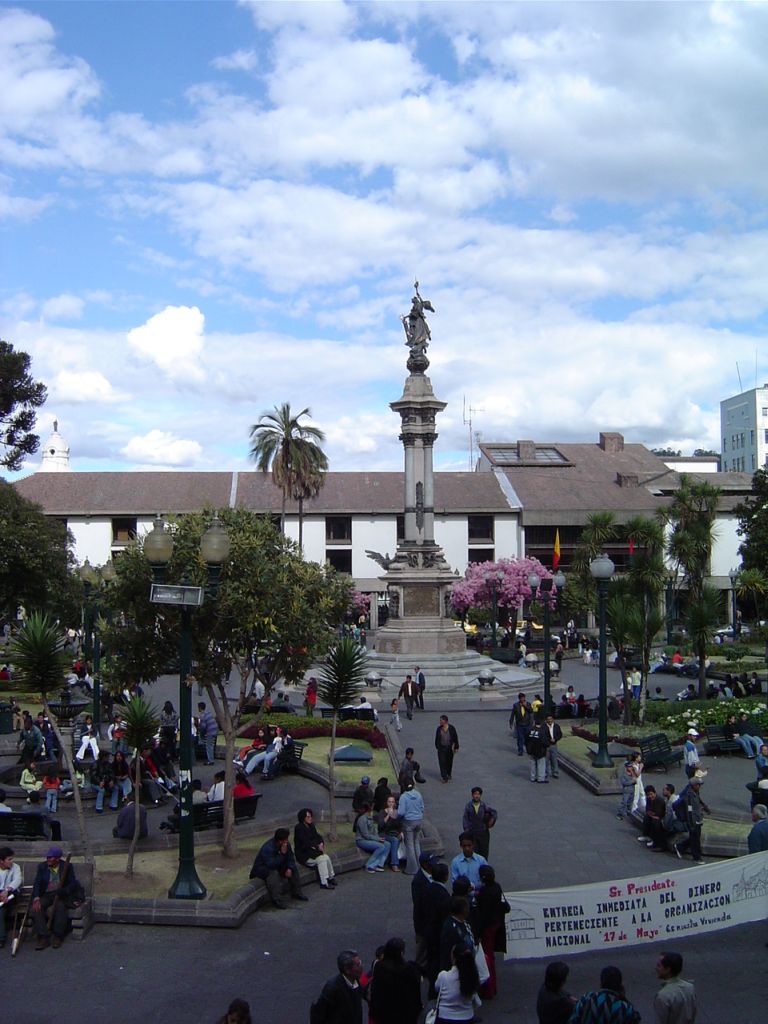
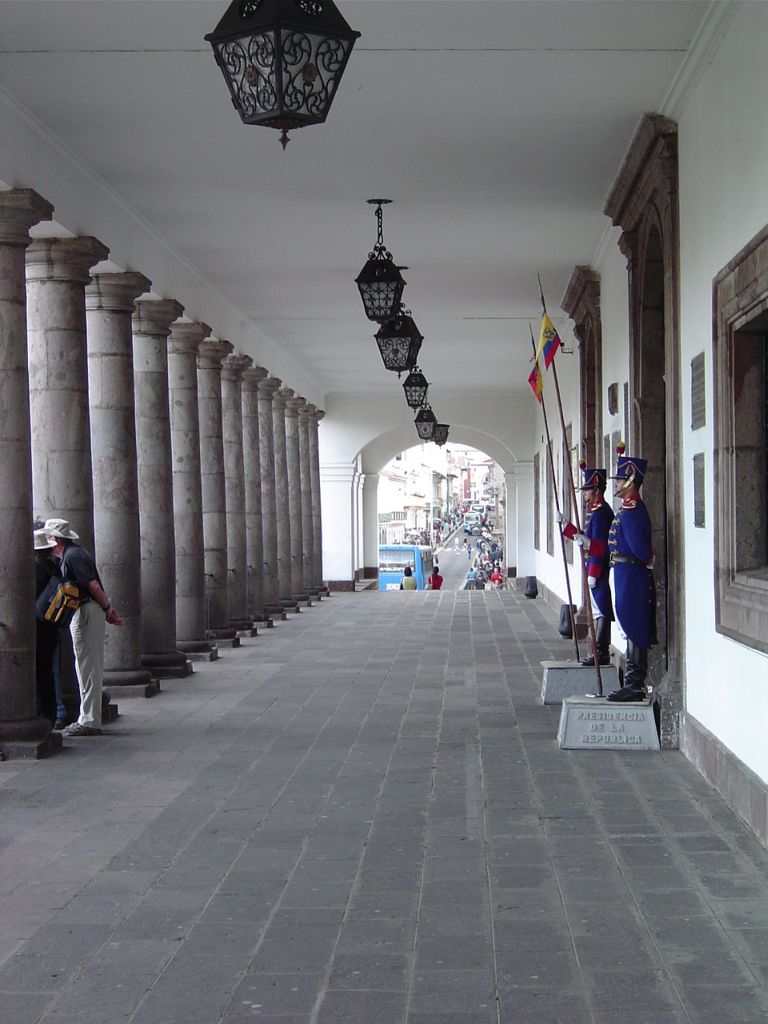
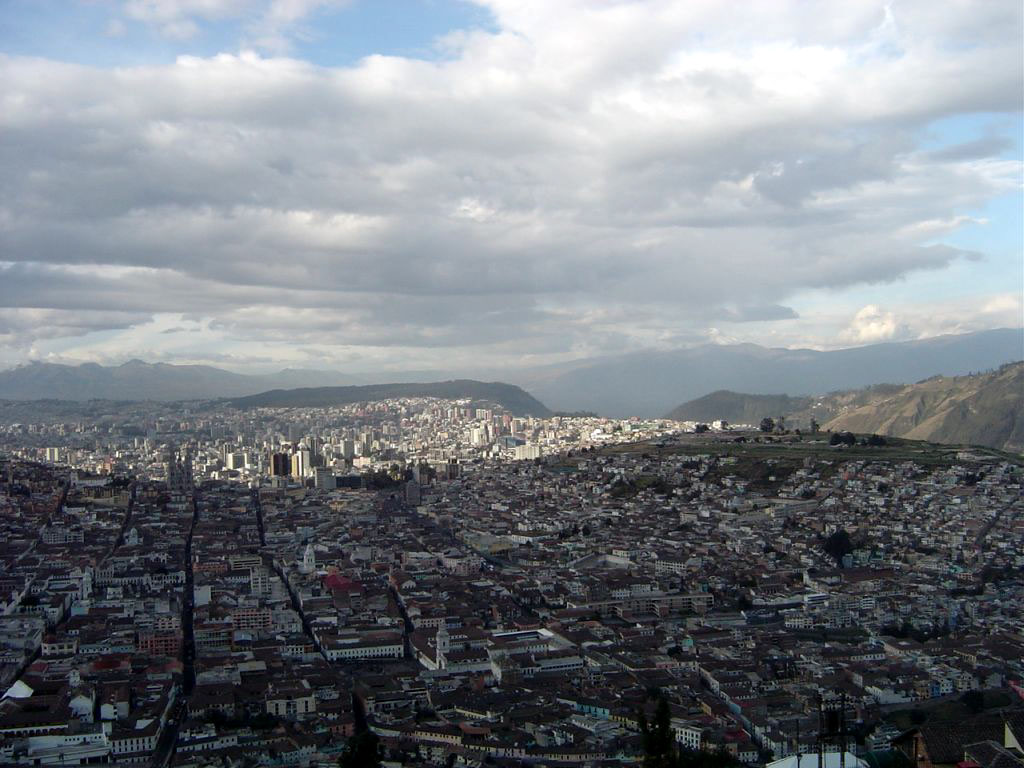
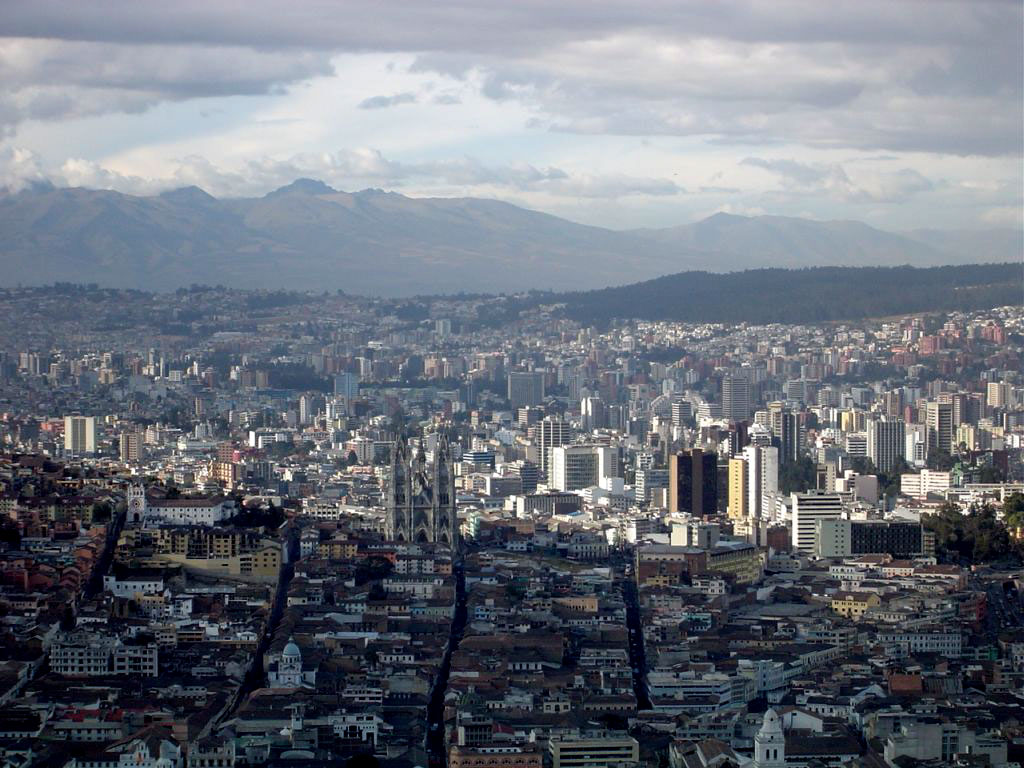
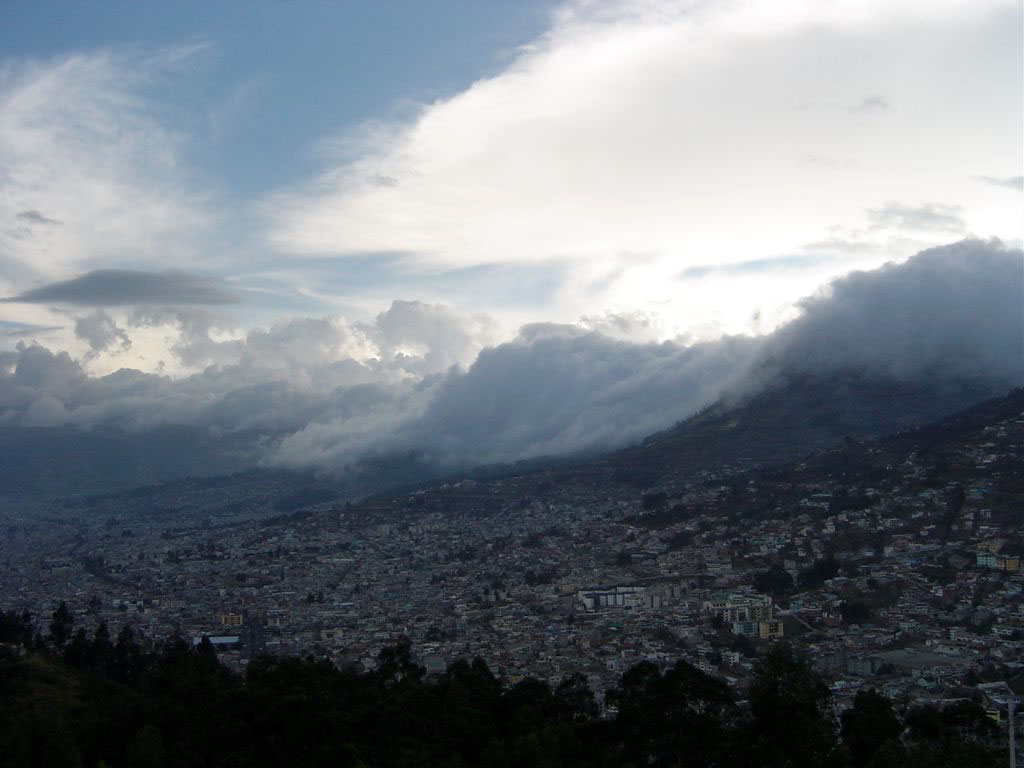
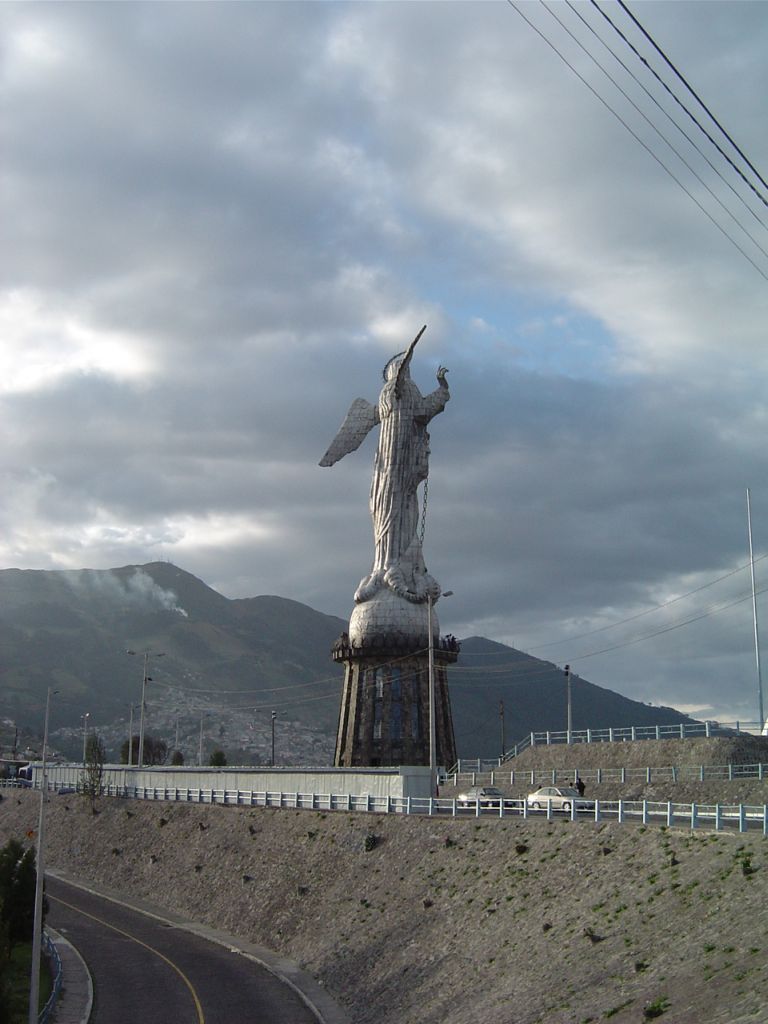
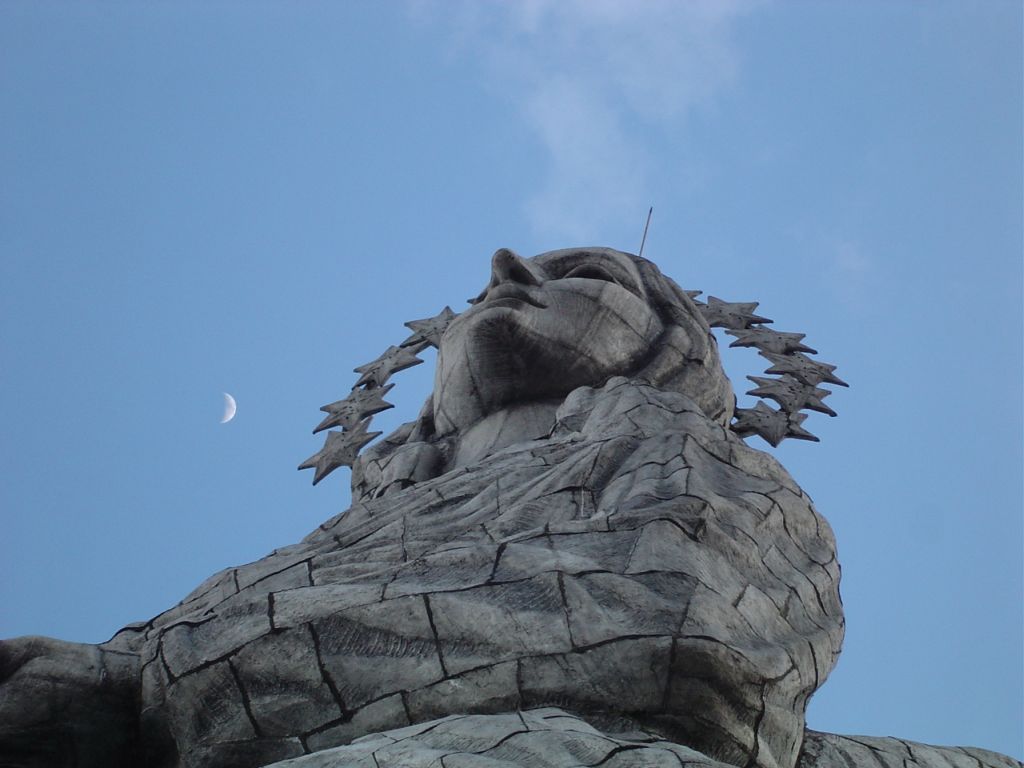
July 24th
Otavalo is the place to be on Saturday; a visit to their Mercado de Artesanias is well worth the 2-hour trip. The bus ride was long and boring, but at $2.00 per person, we couldn't complain; a taxi would have been $40 each way. Weavings (sweaters, table coverings) and jewelry (all silver, since there is no gold in Ecuador) predominated. The cutest thing I saw was a chess set with Inca Indians on one side and Spaniards on the other.
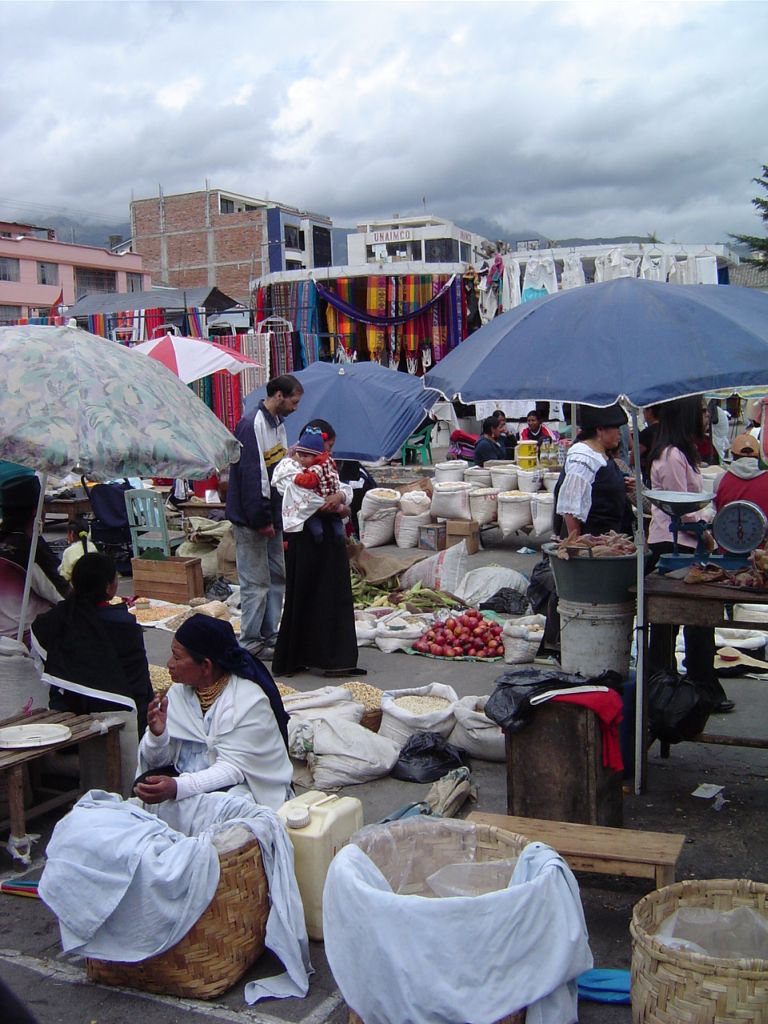
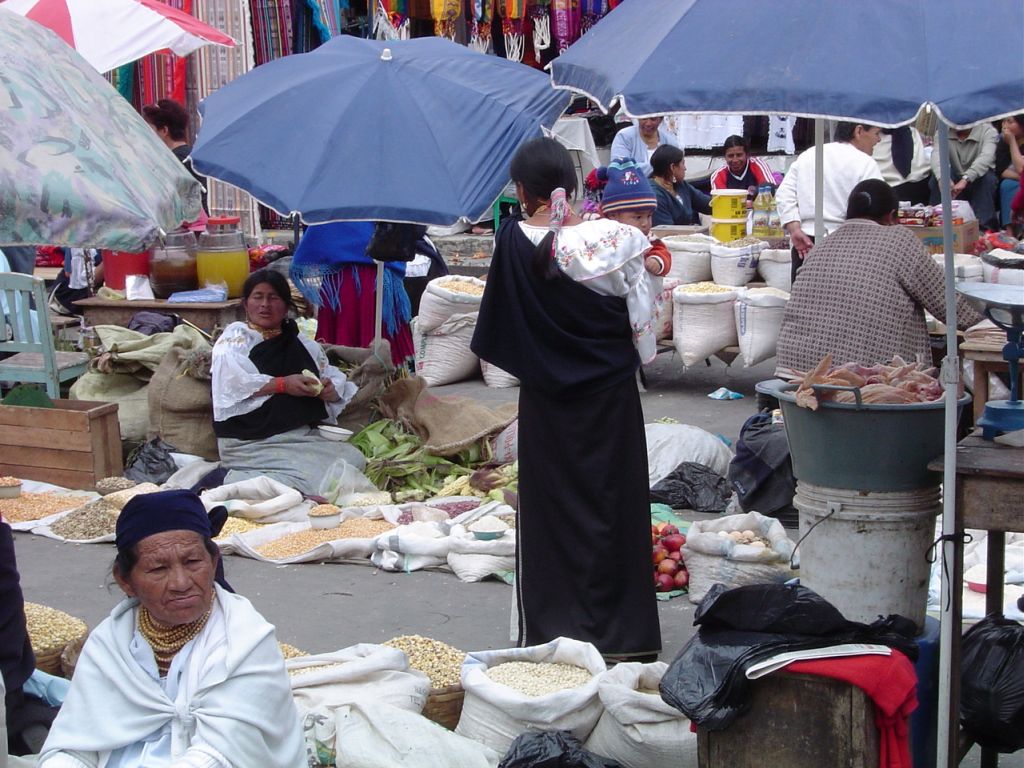
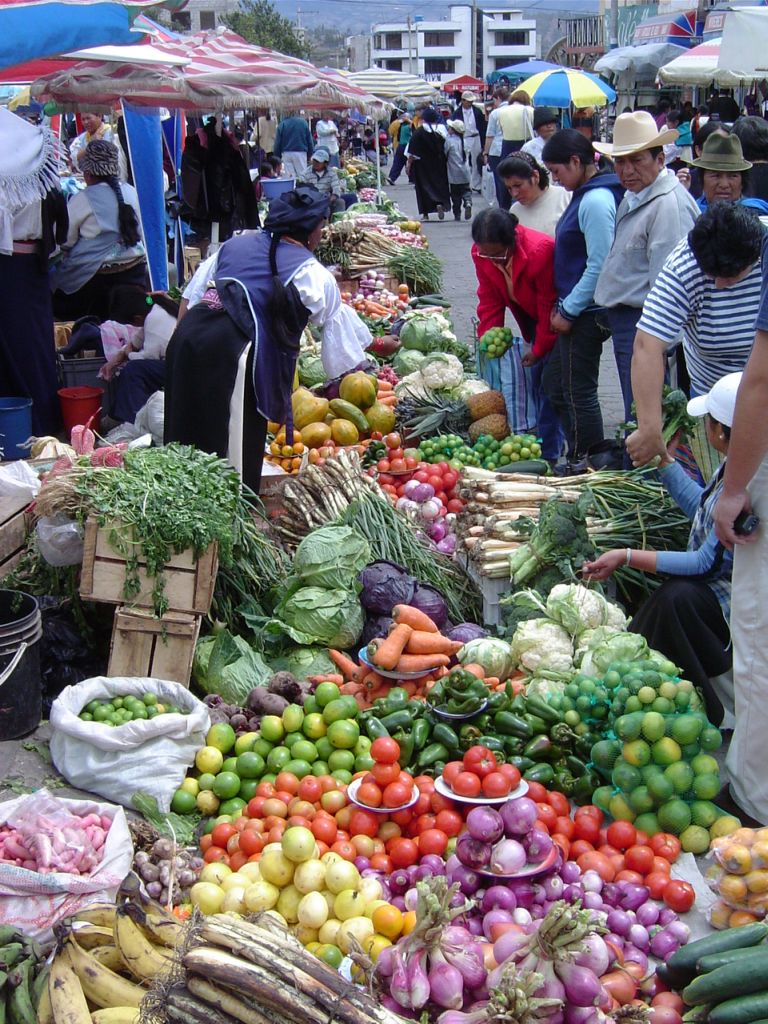
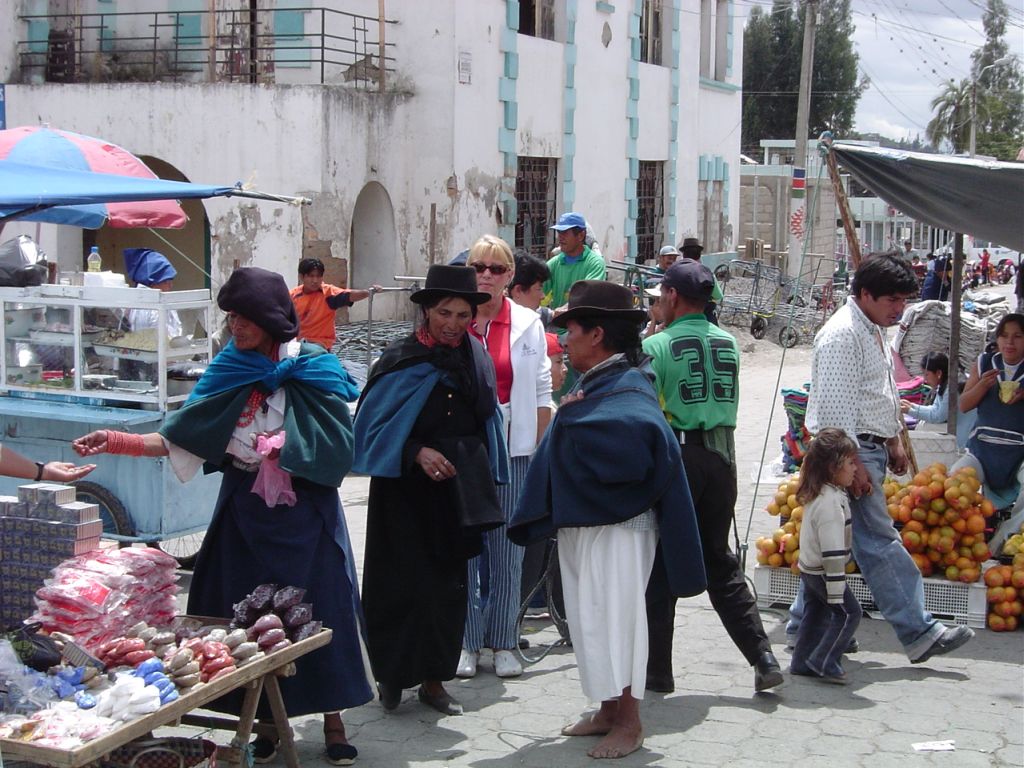
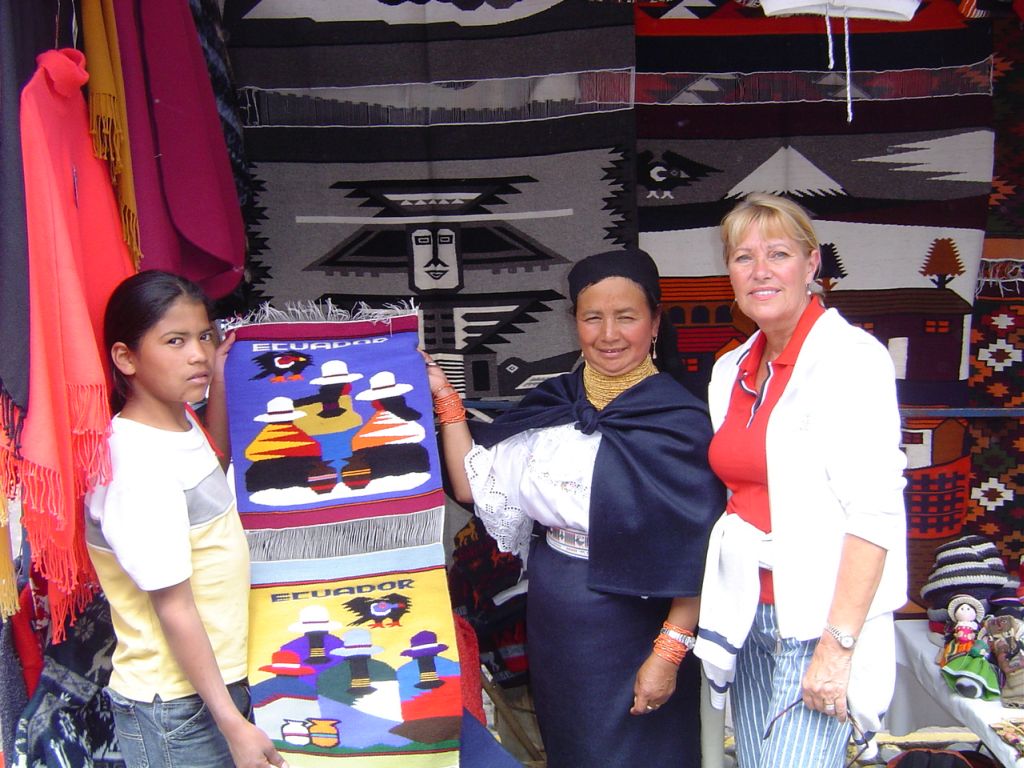
Which one do you like better?
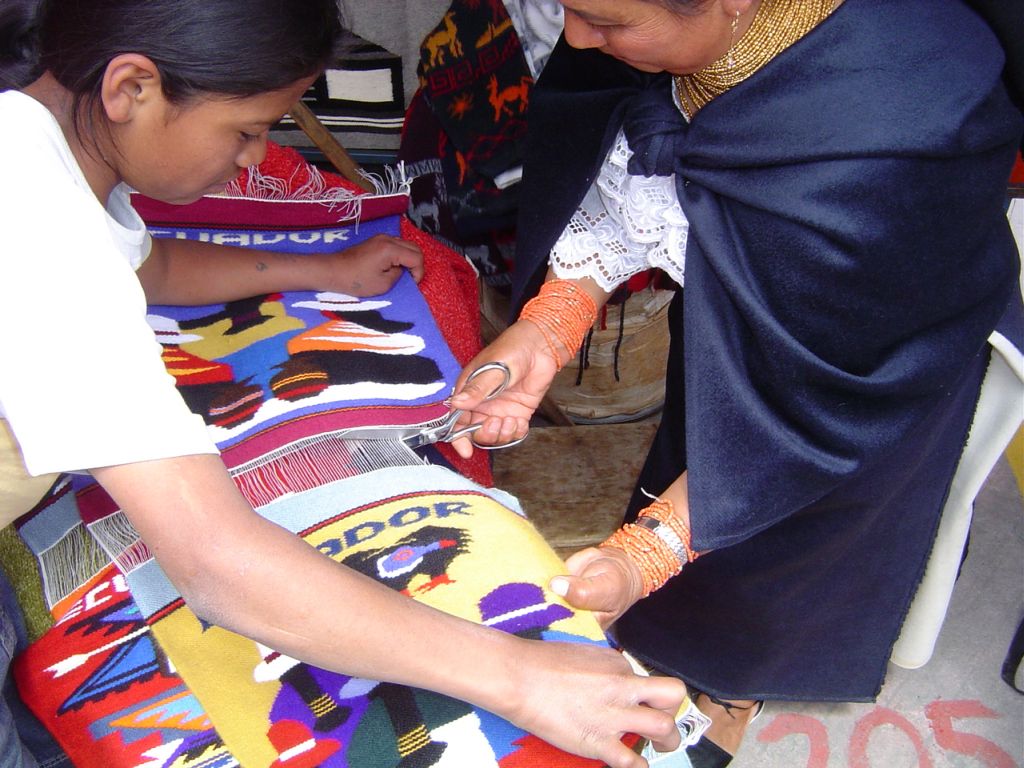
OK, the top one it is...
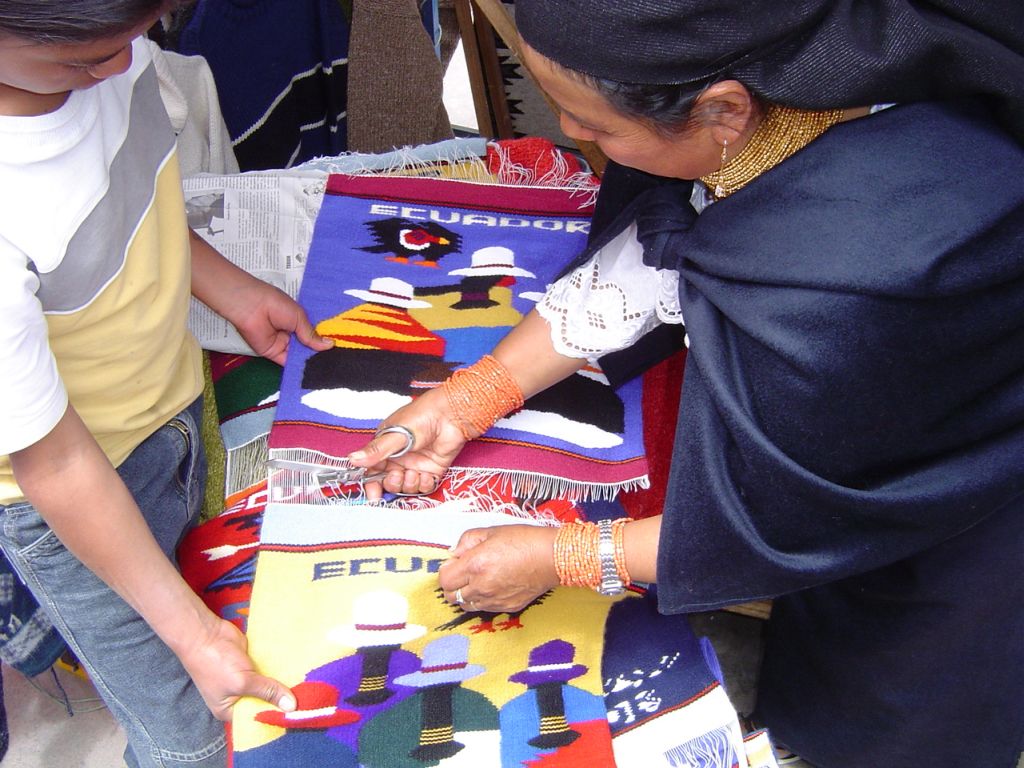
This weaving is now hanging on our wall in Newport Beach
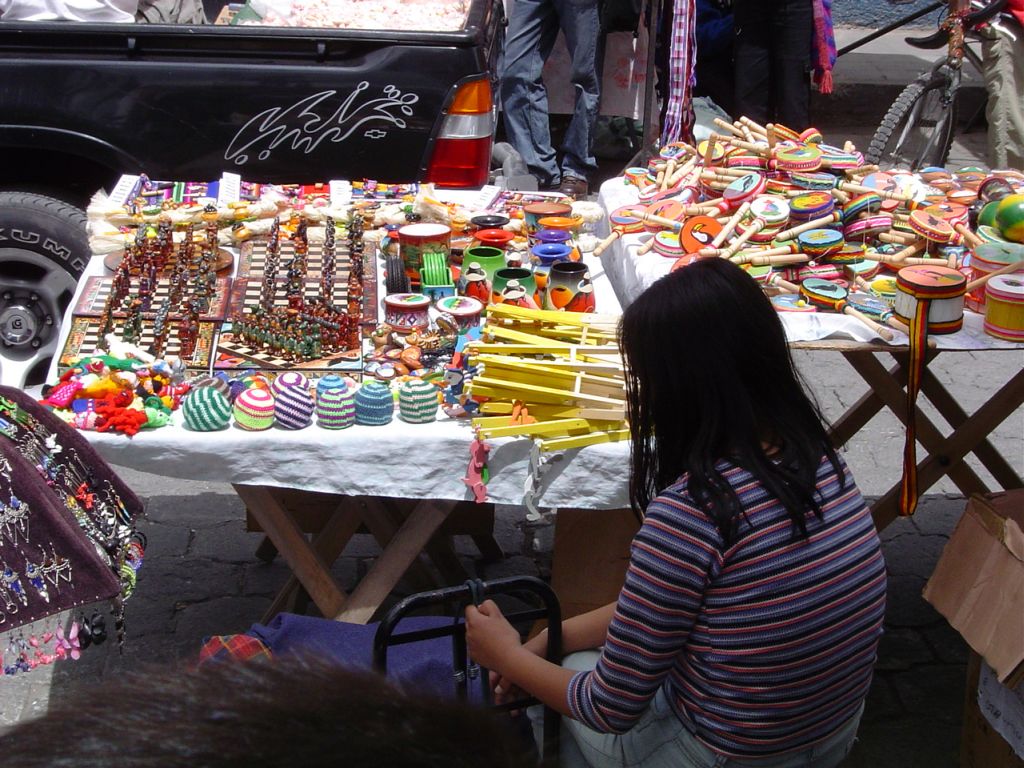
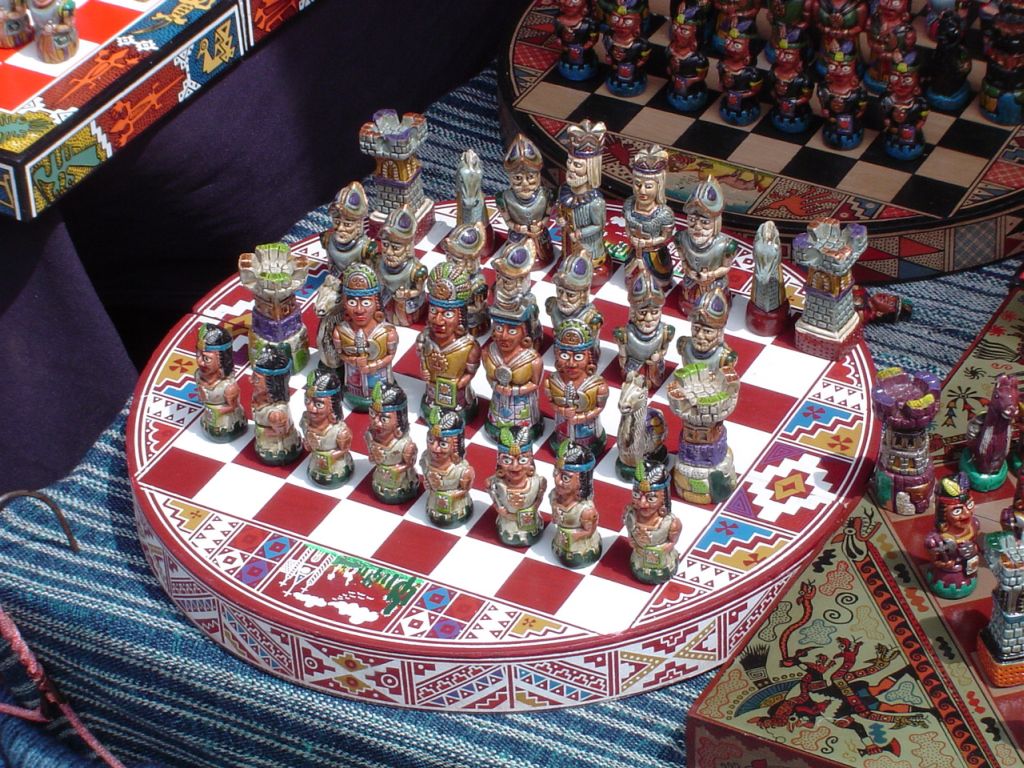
The Incas versus the Spaniards, now sitting in our living room
